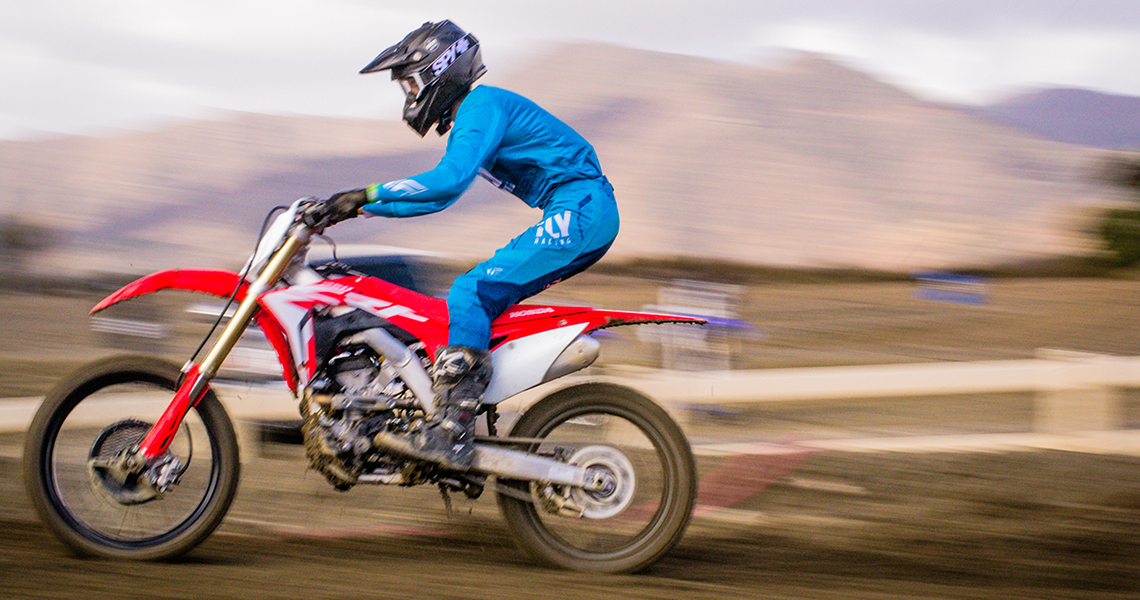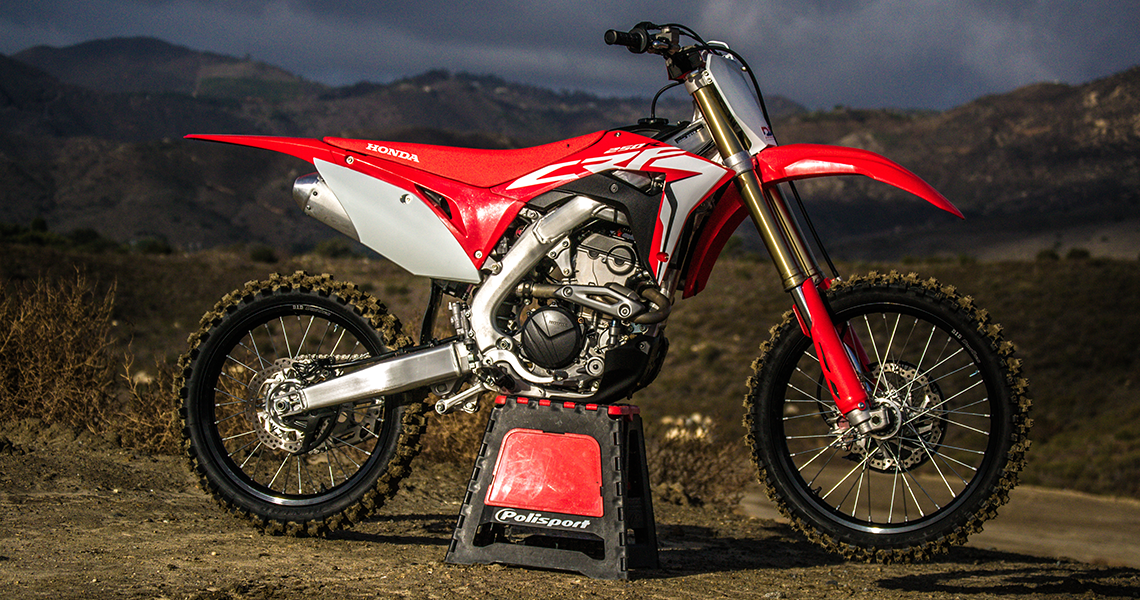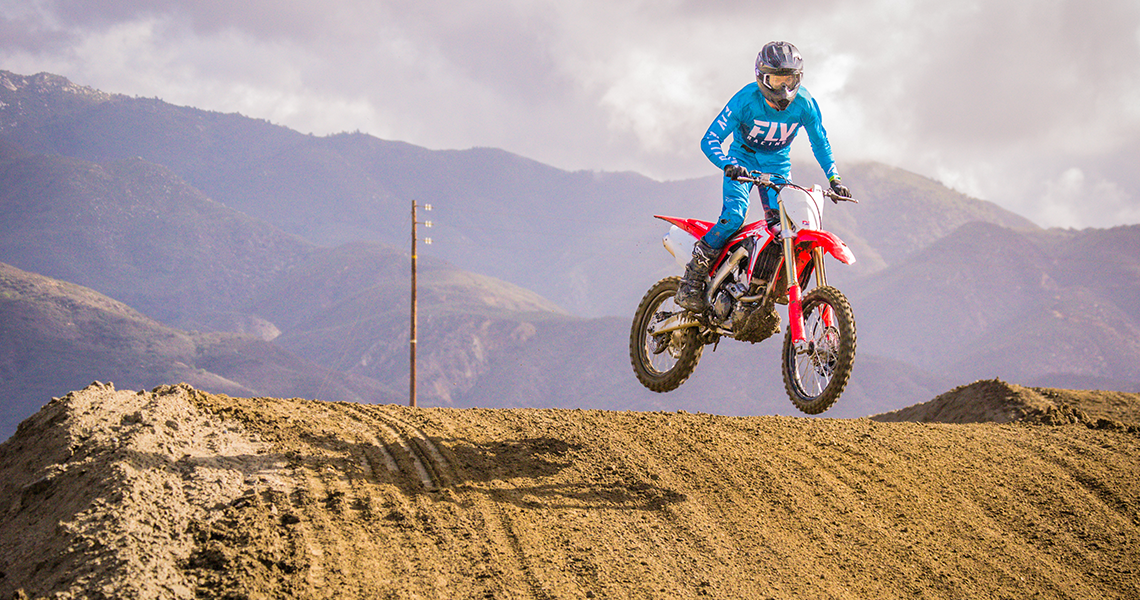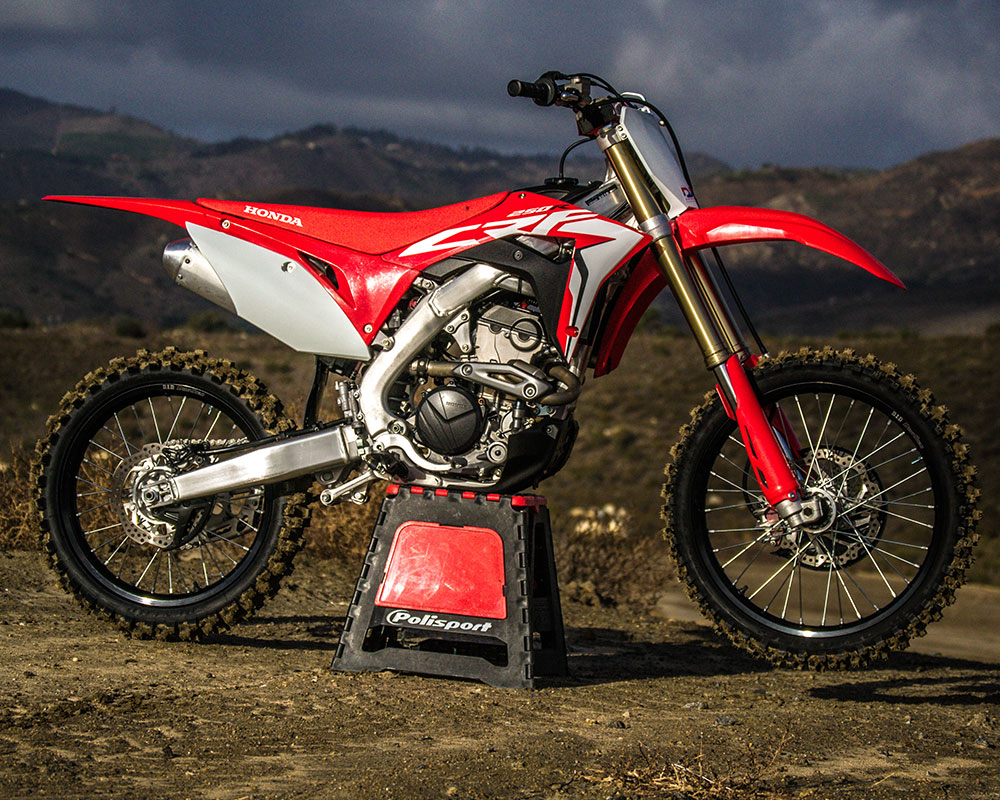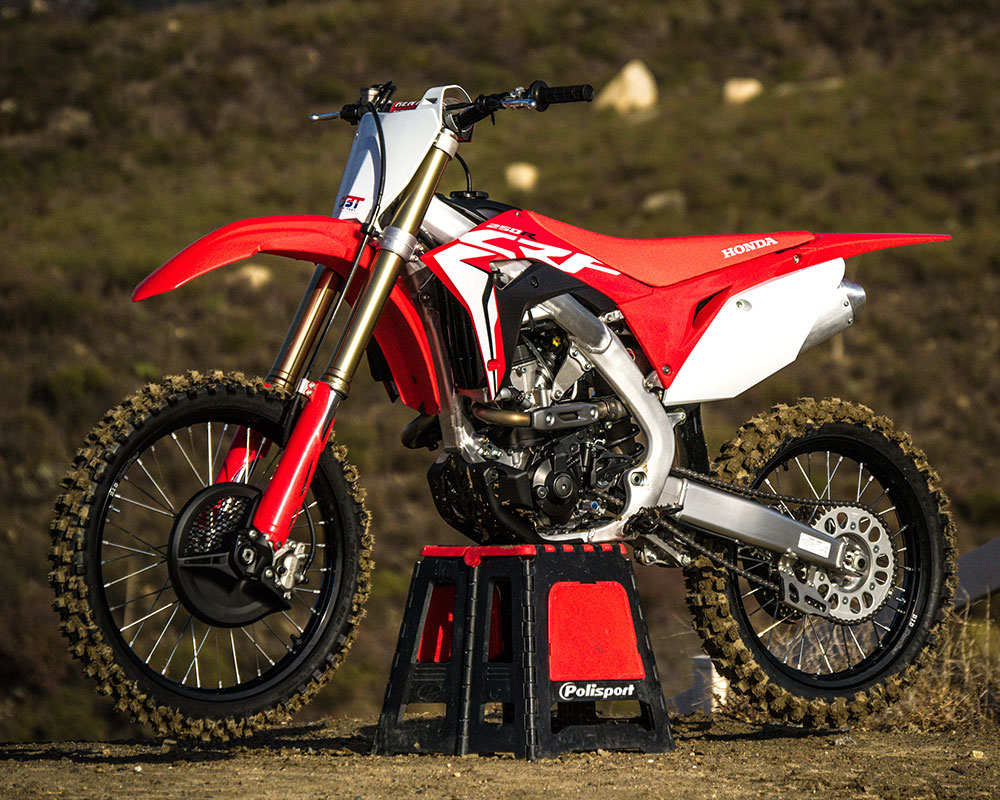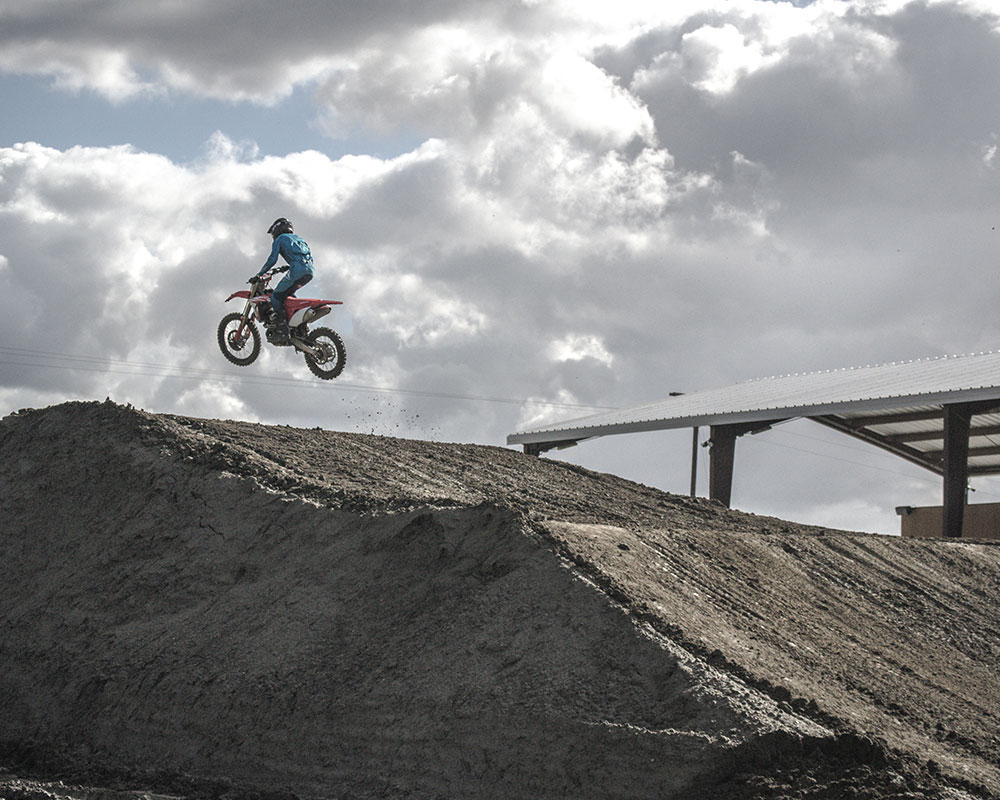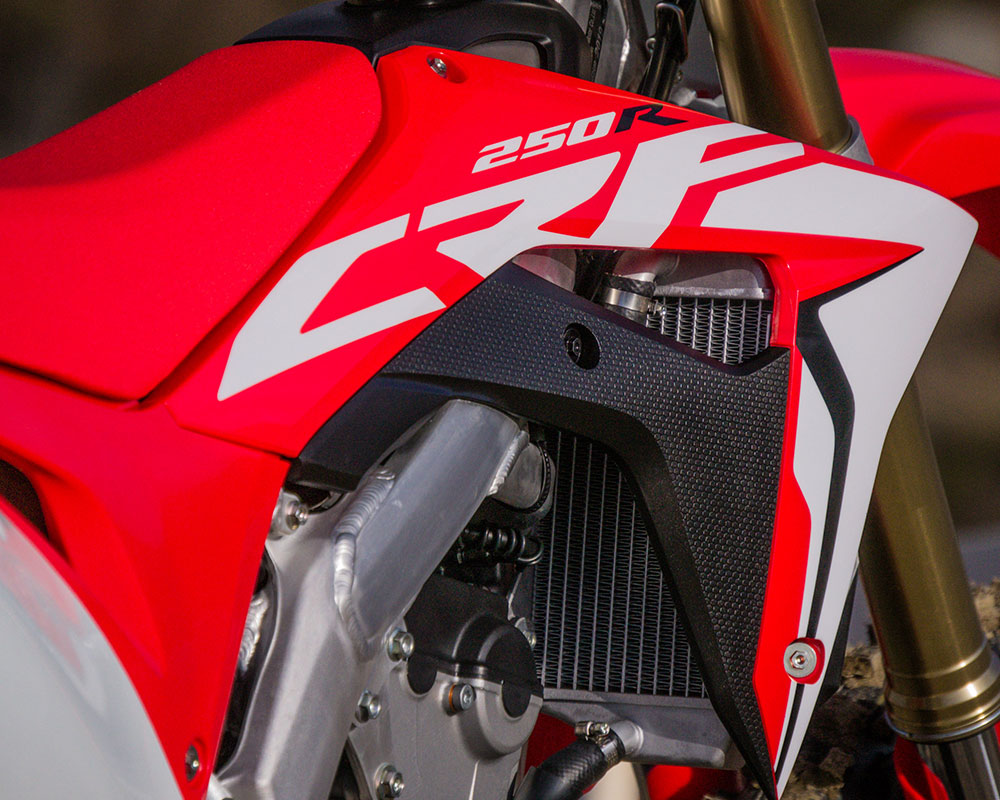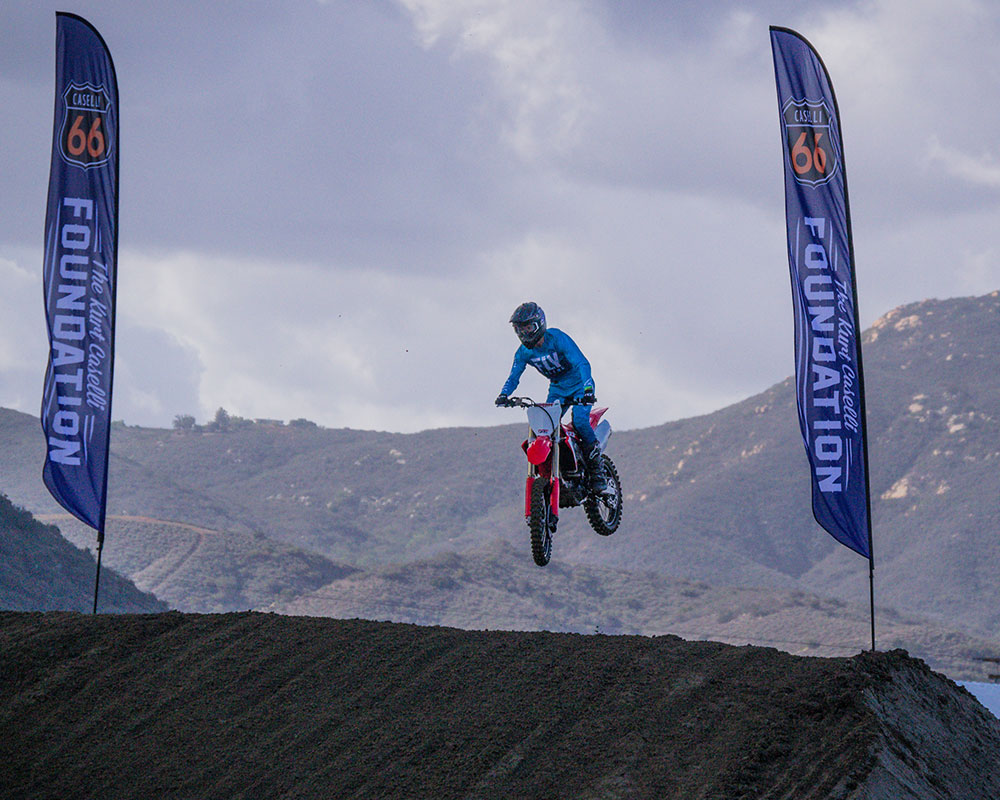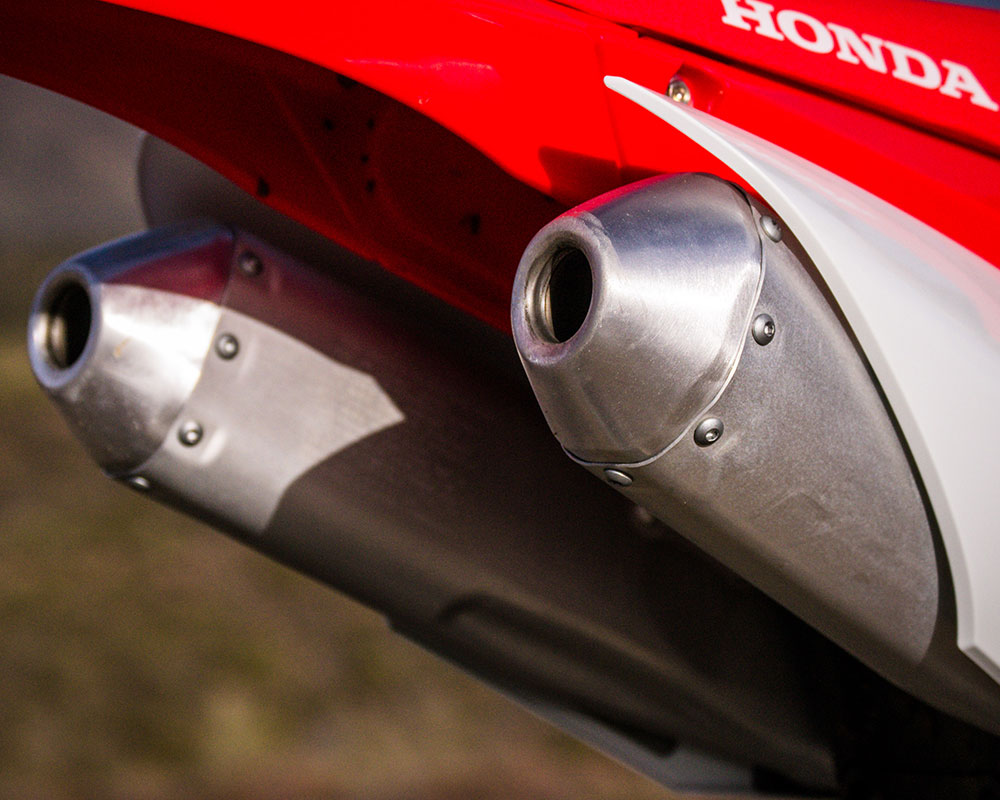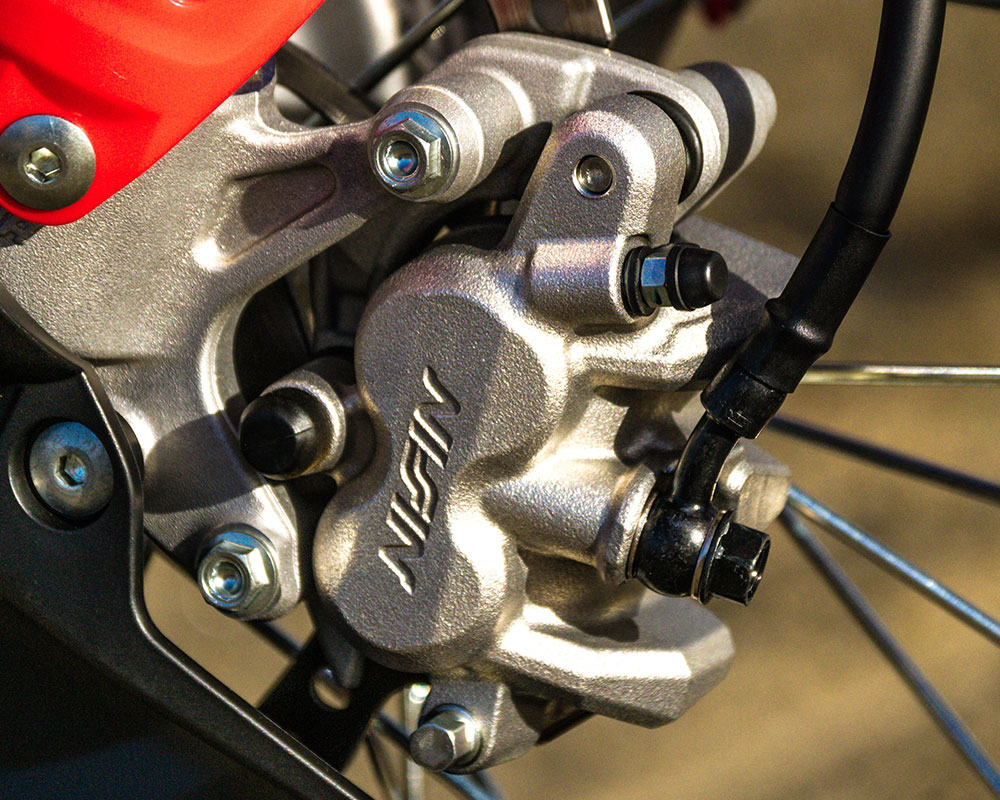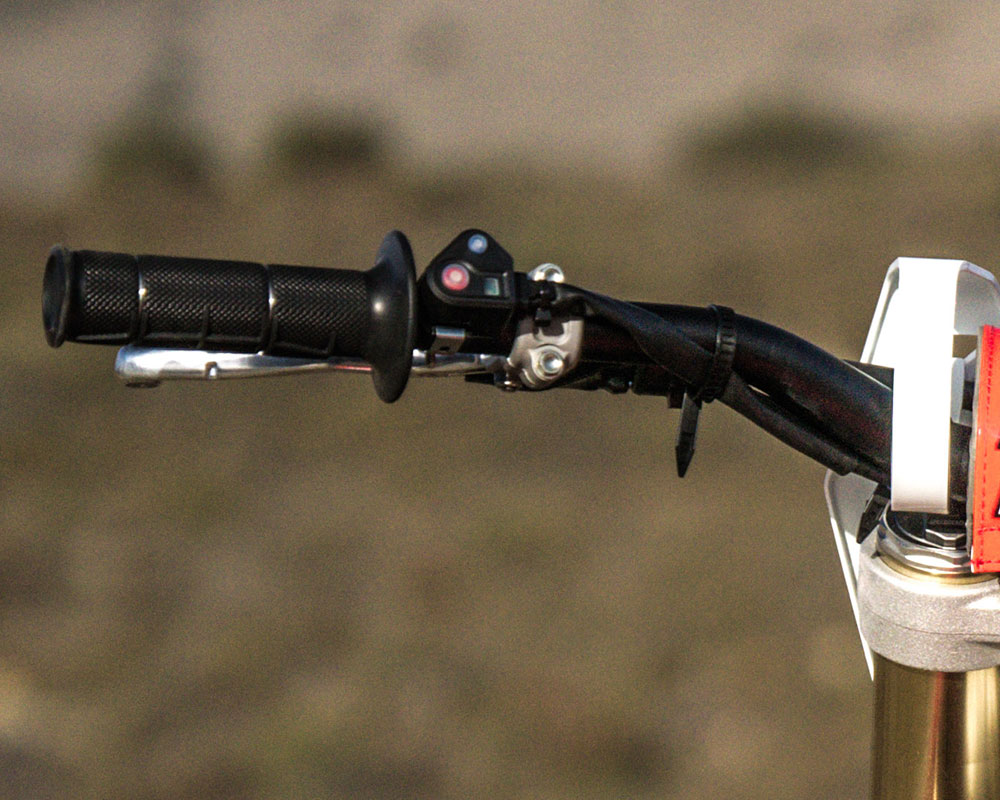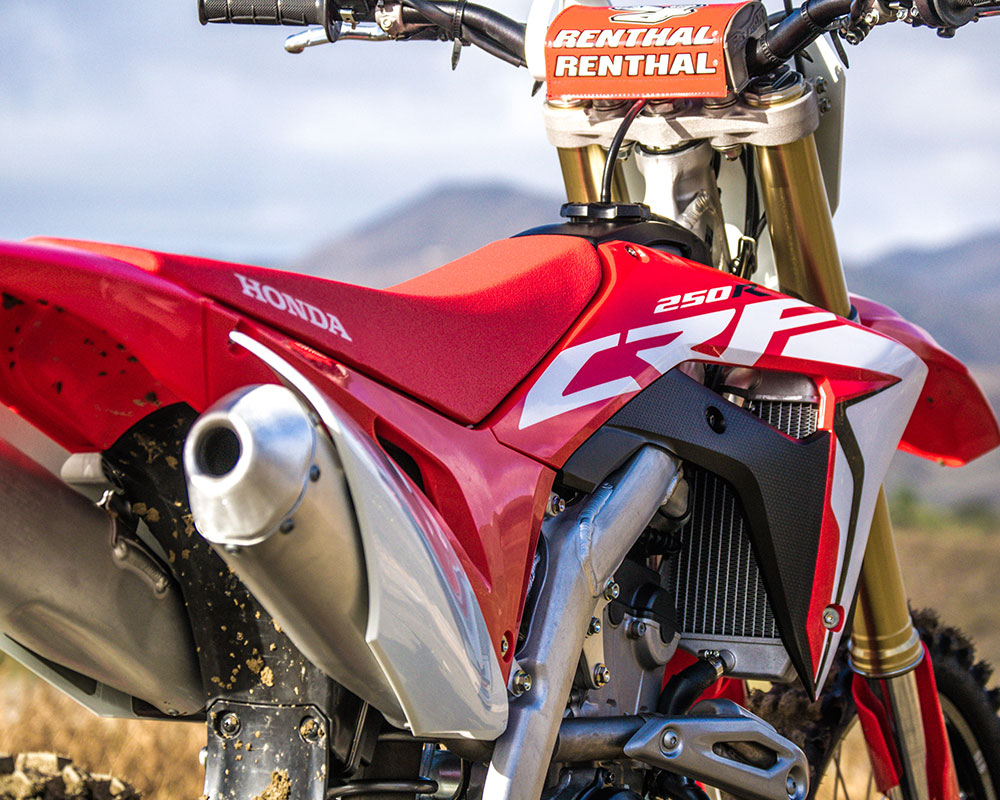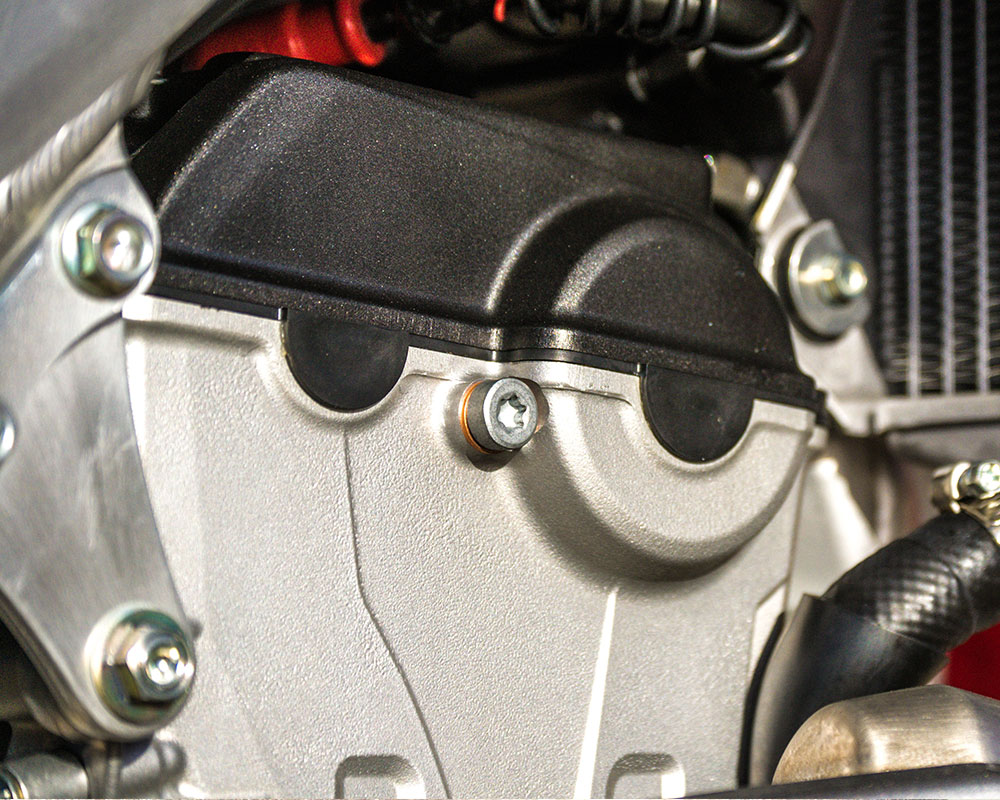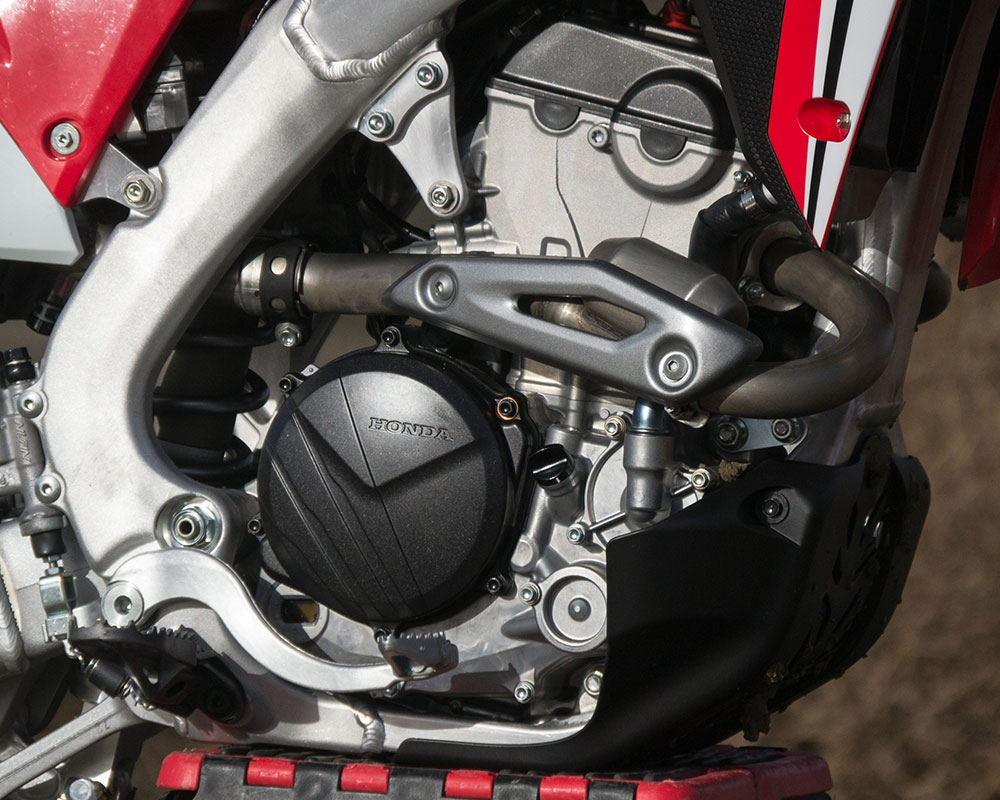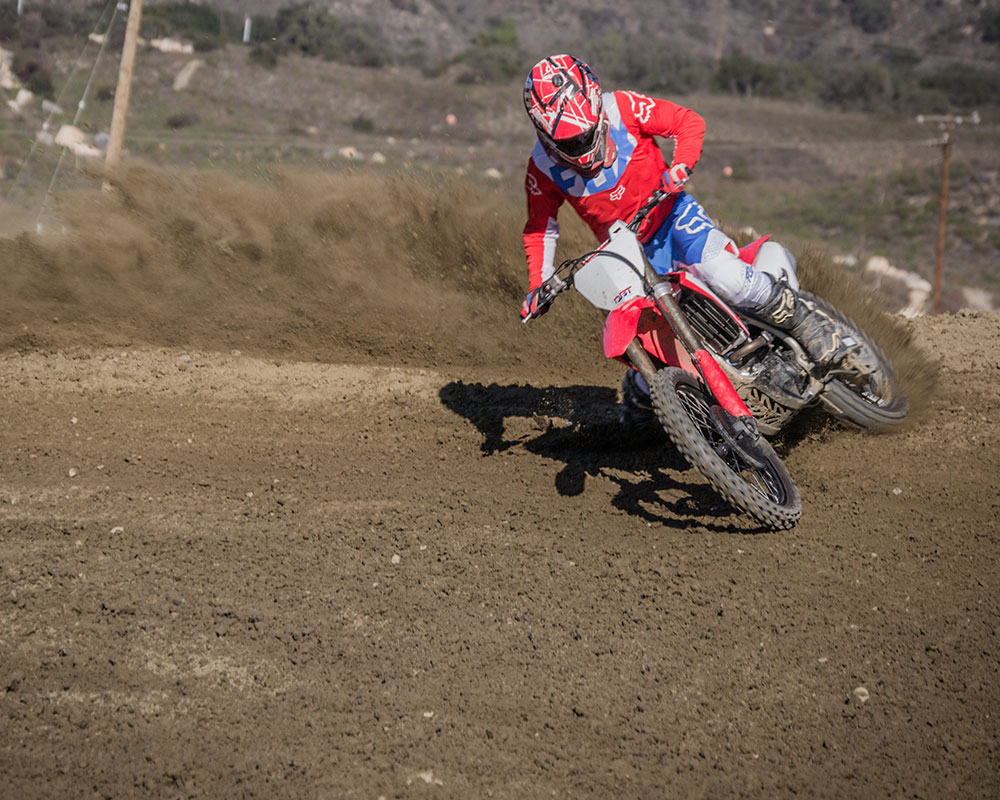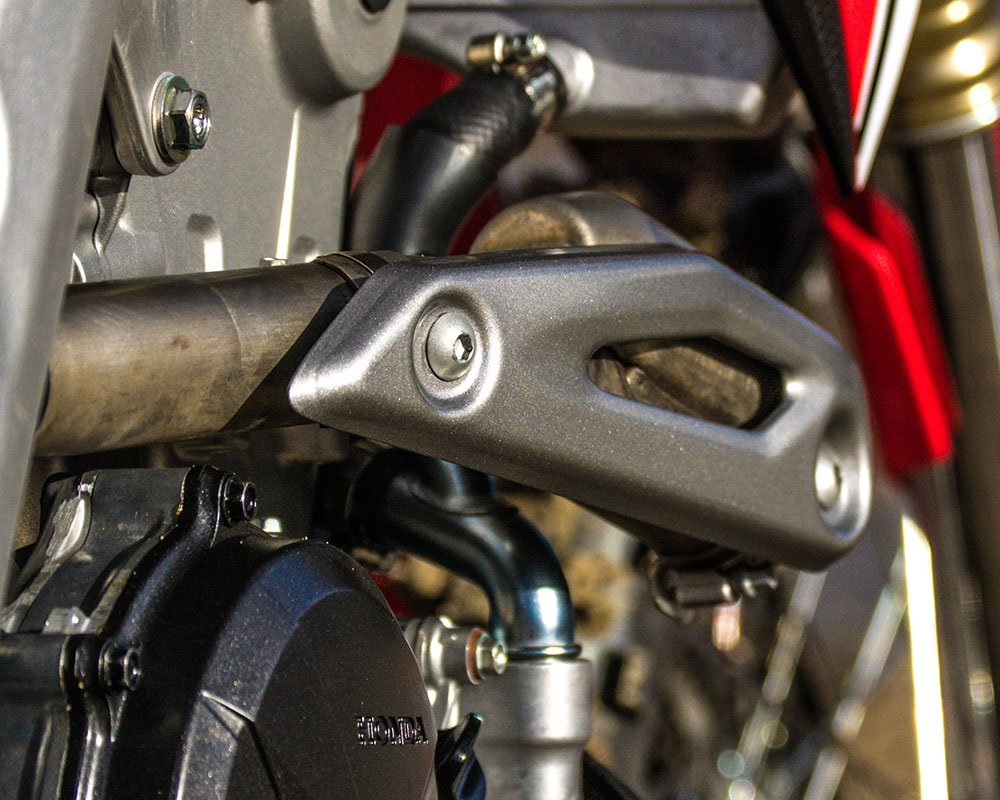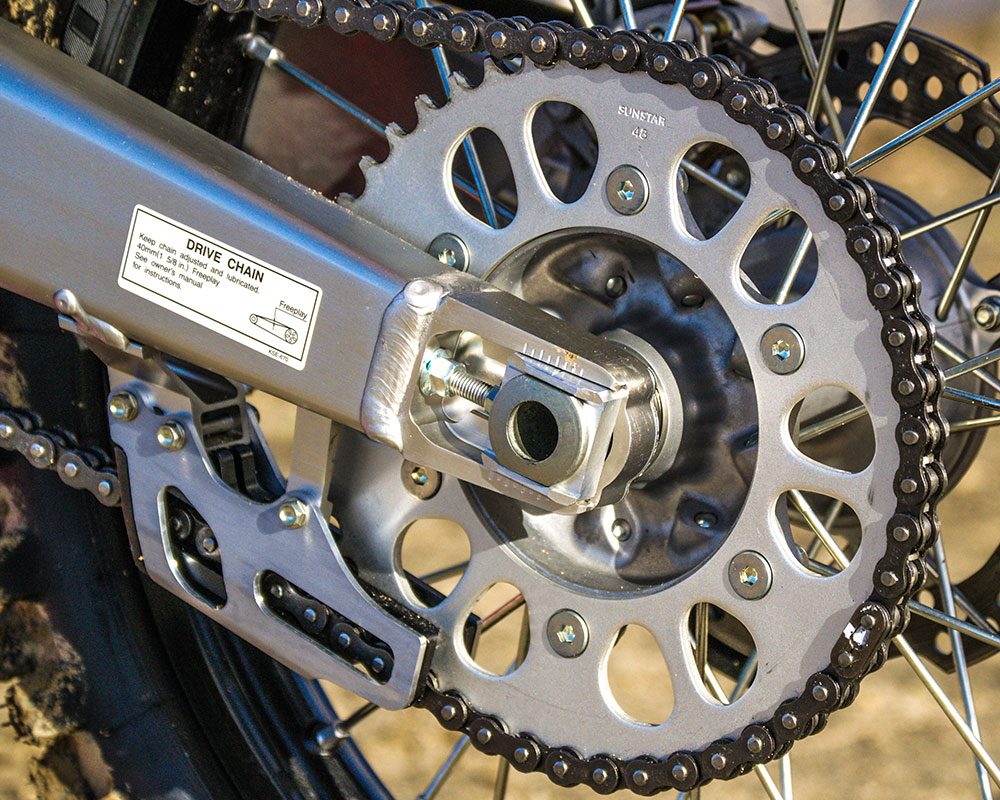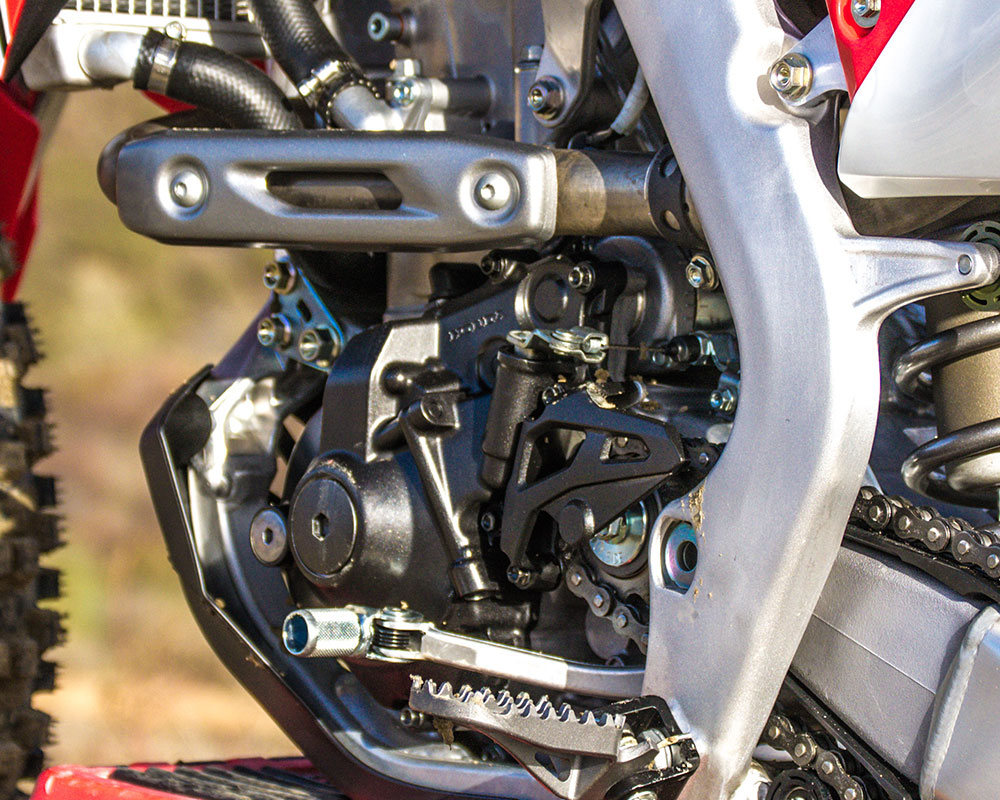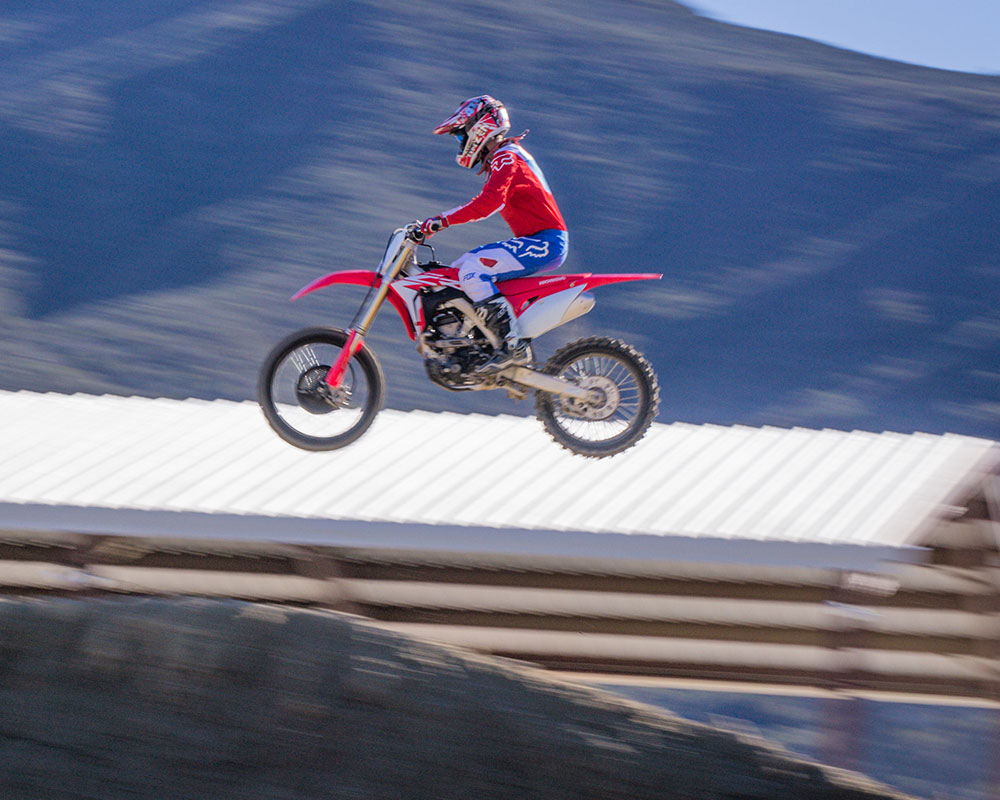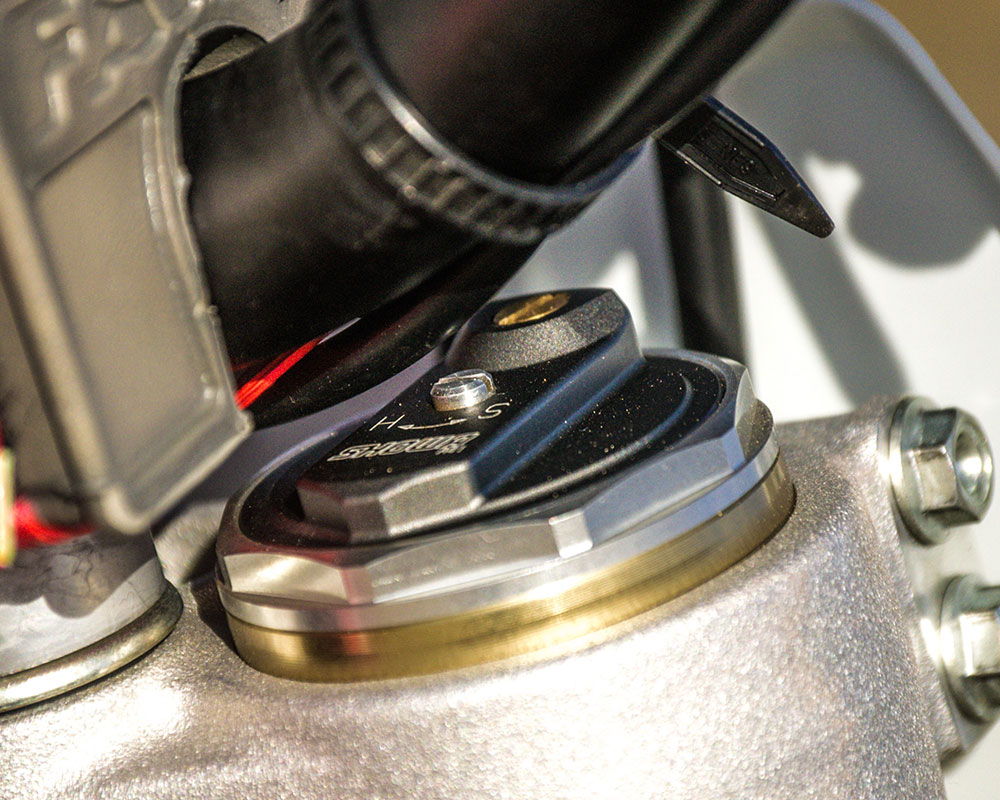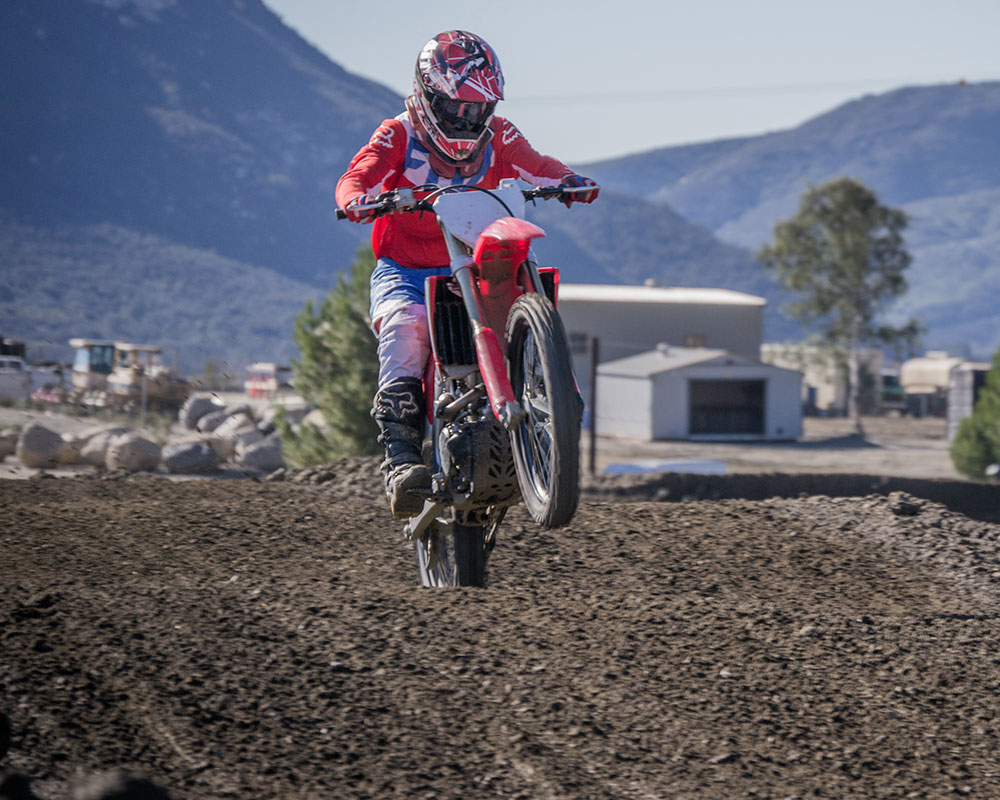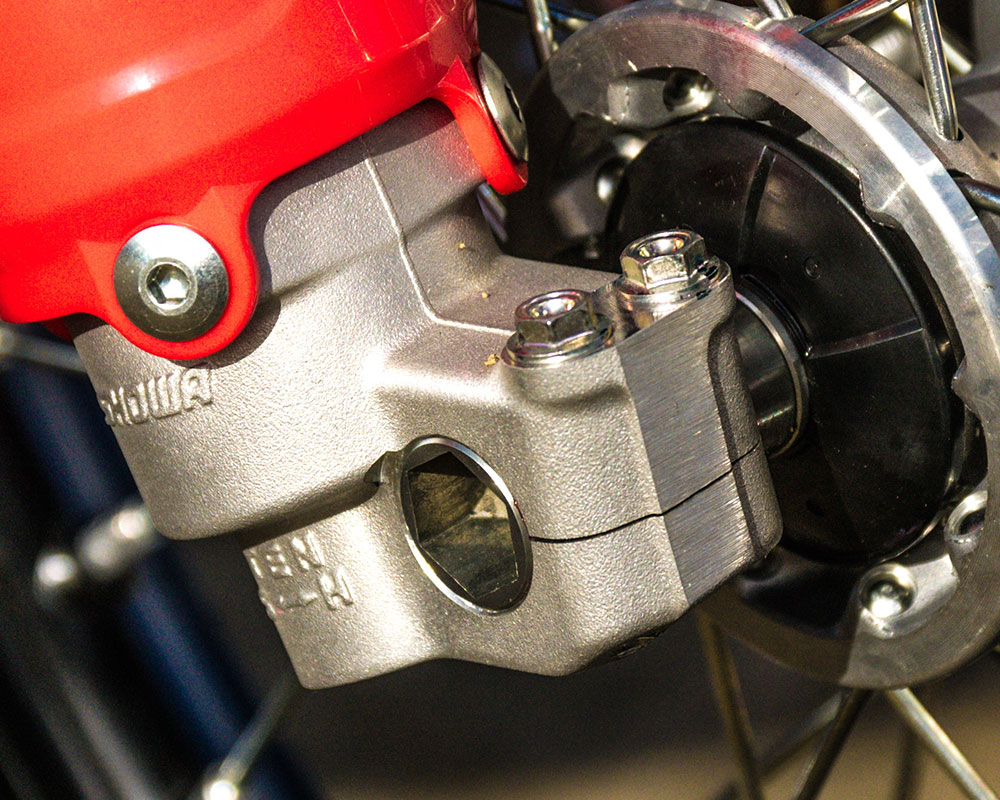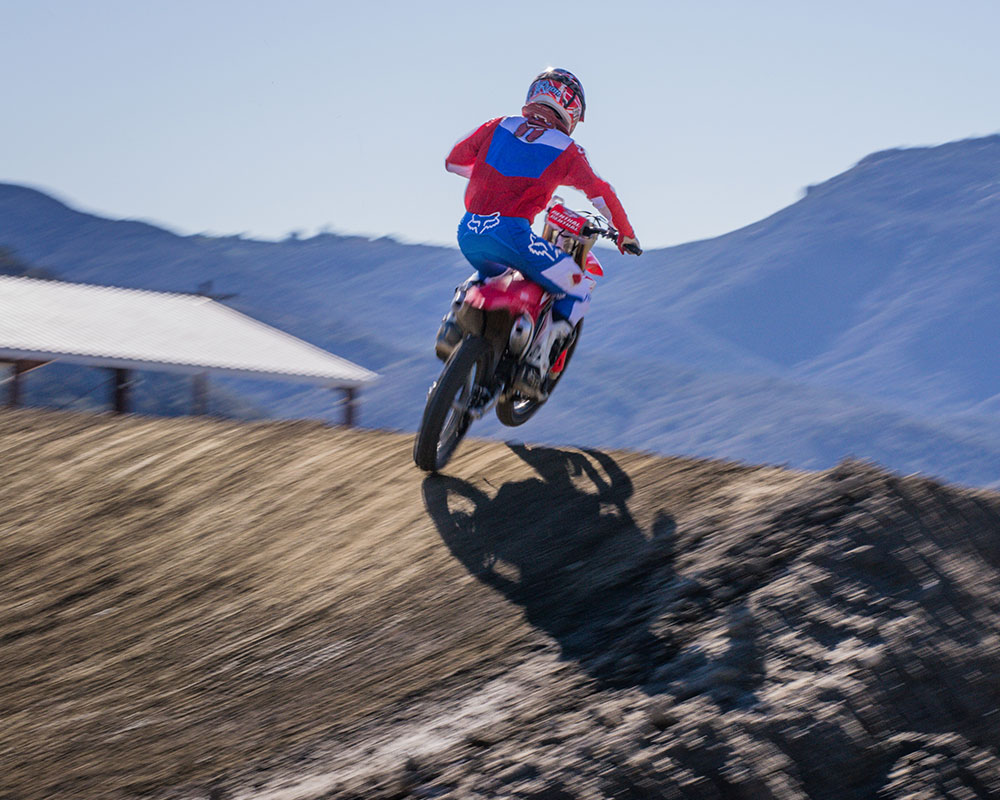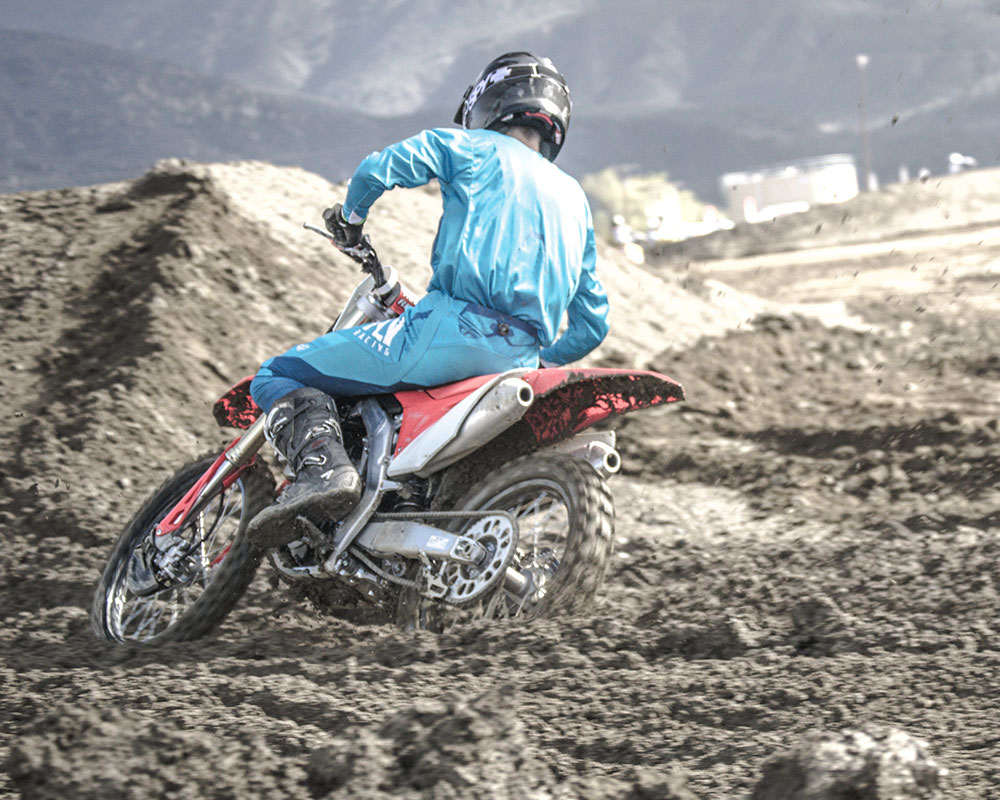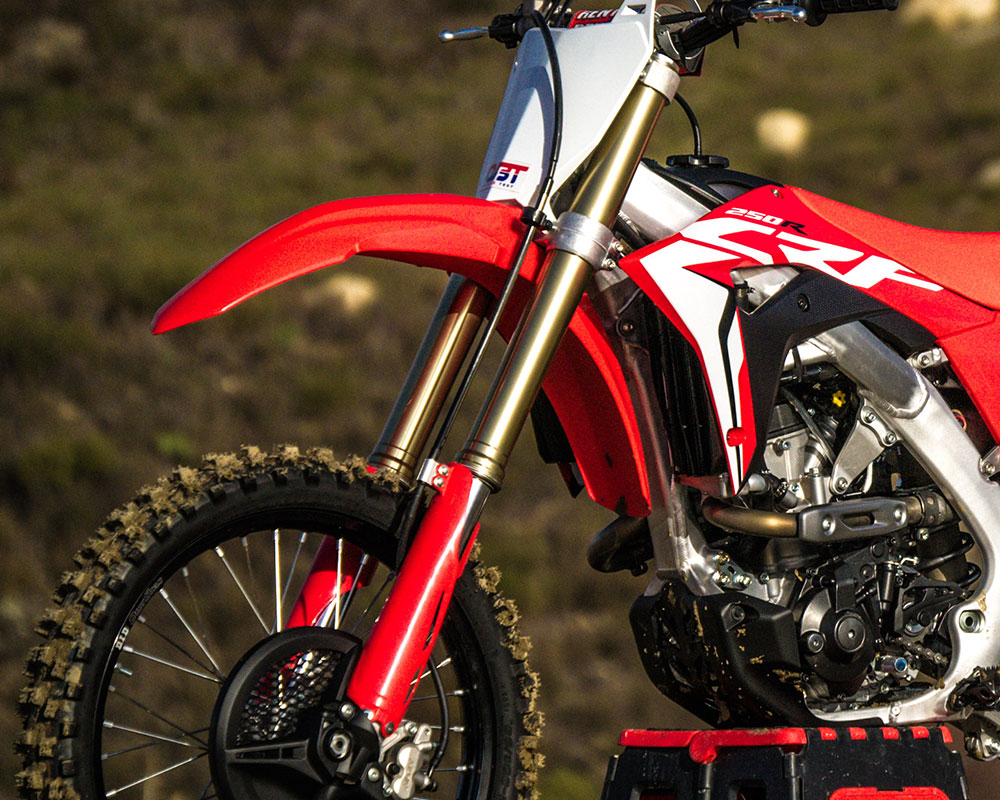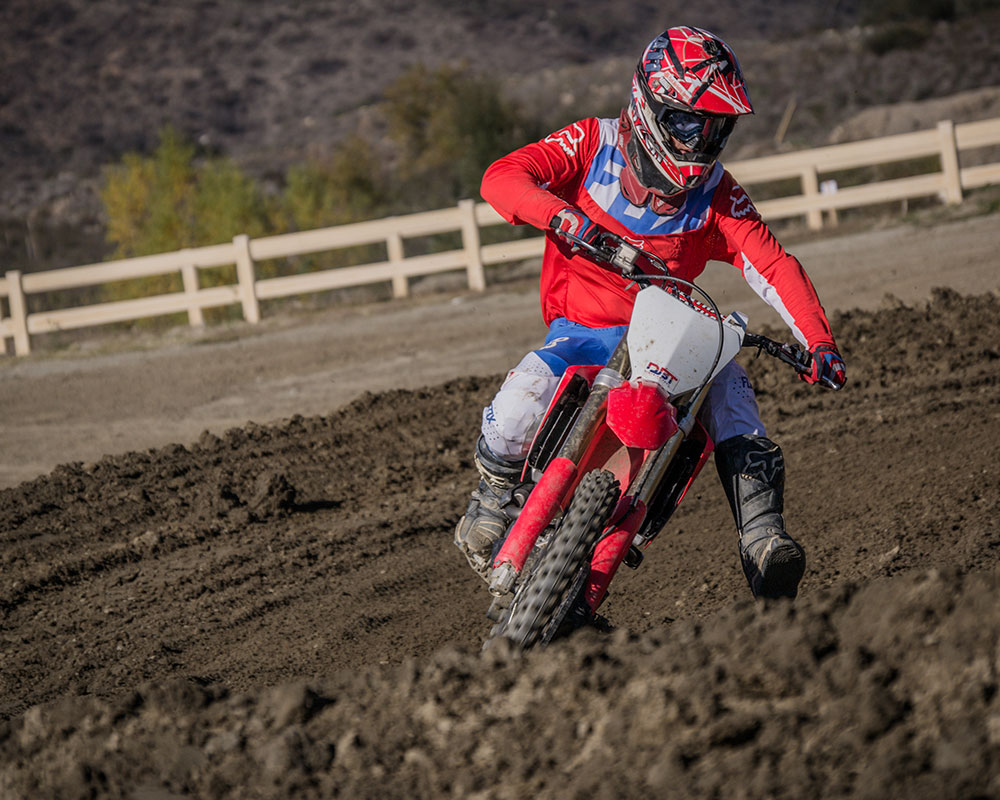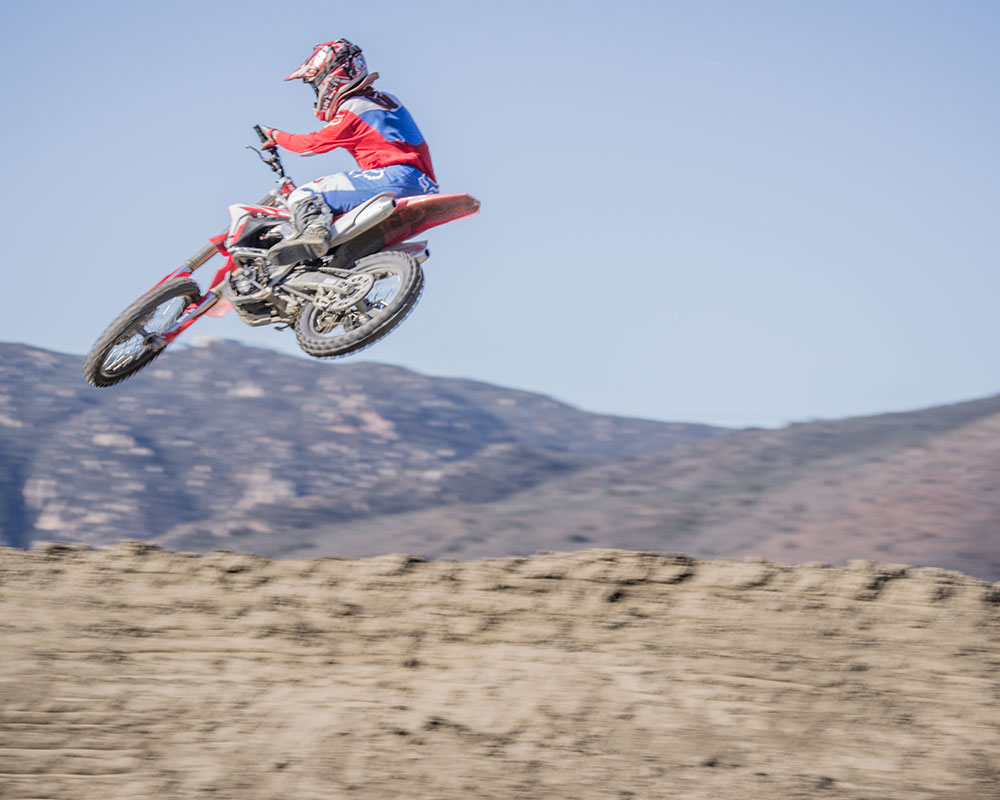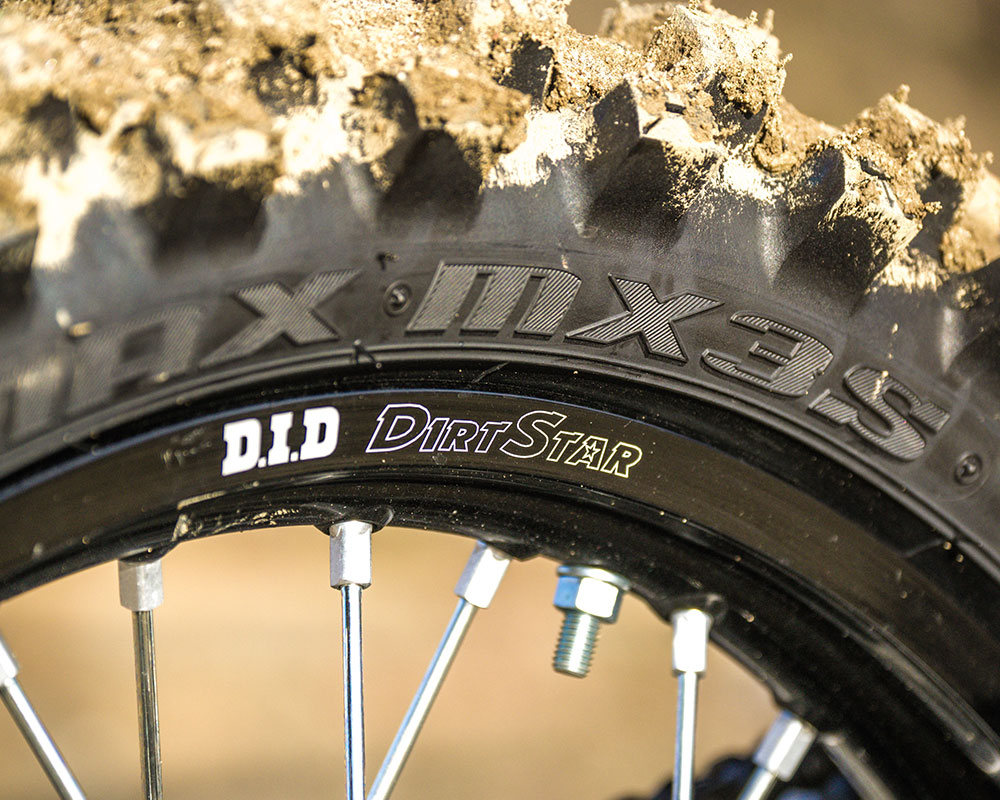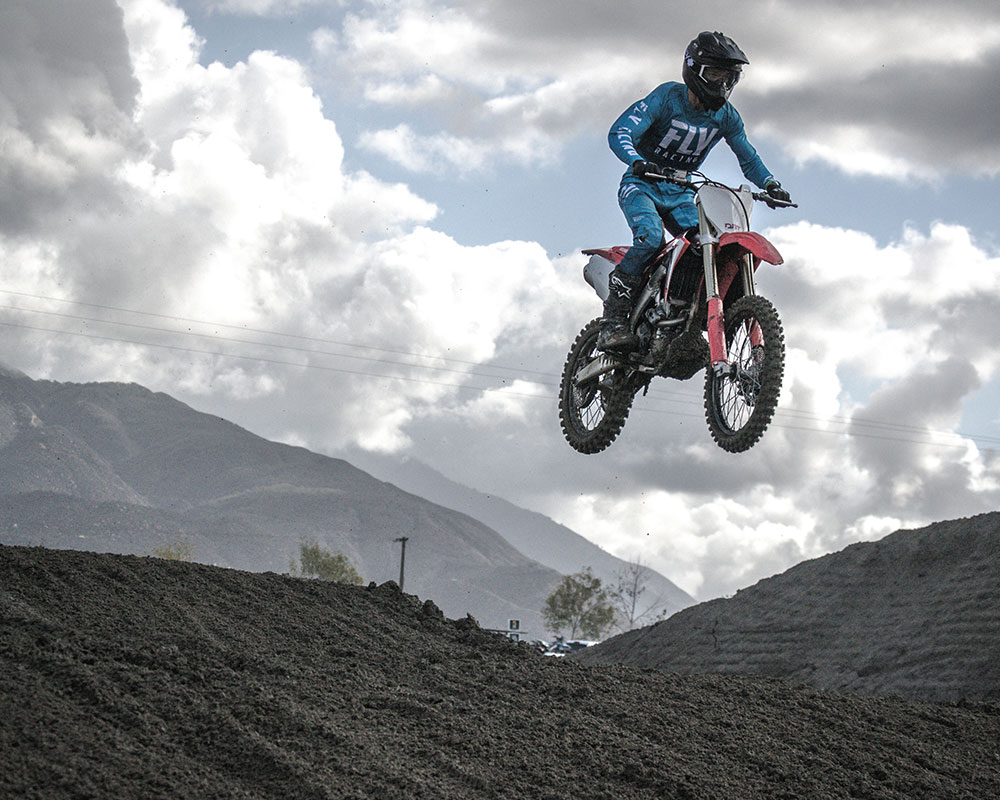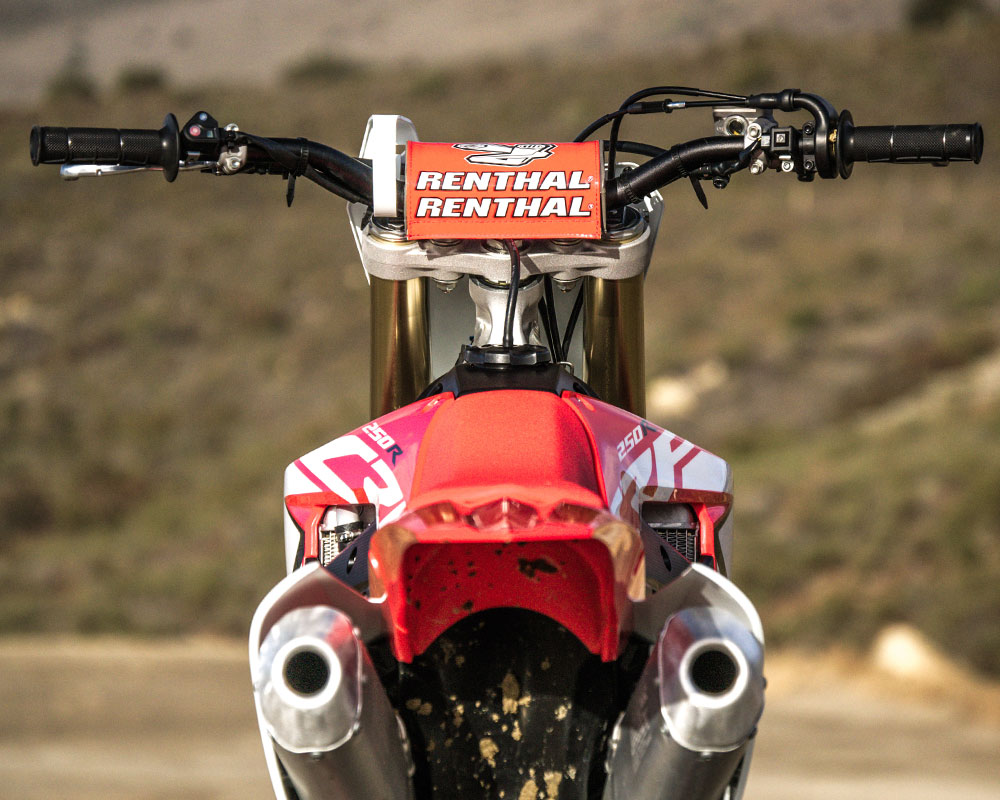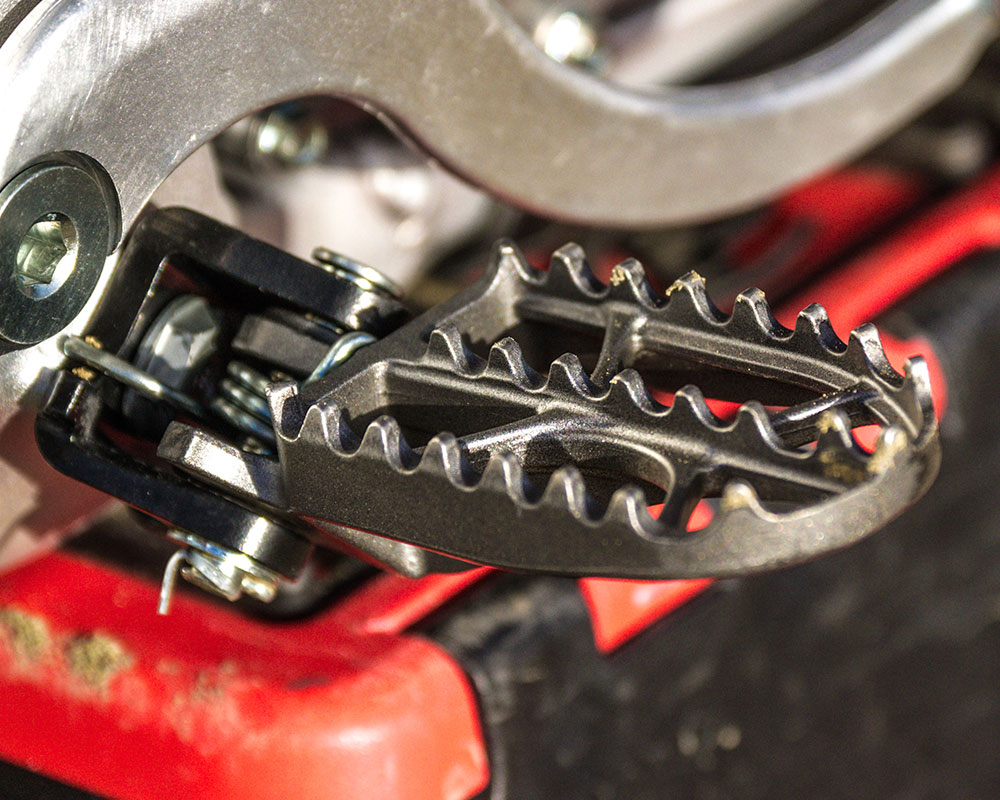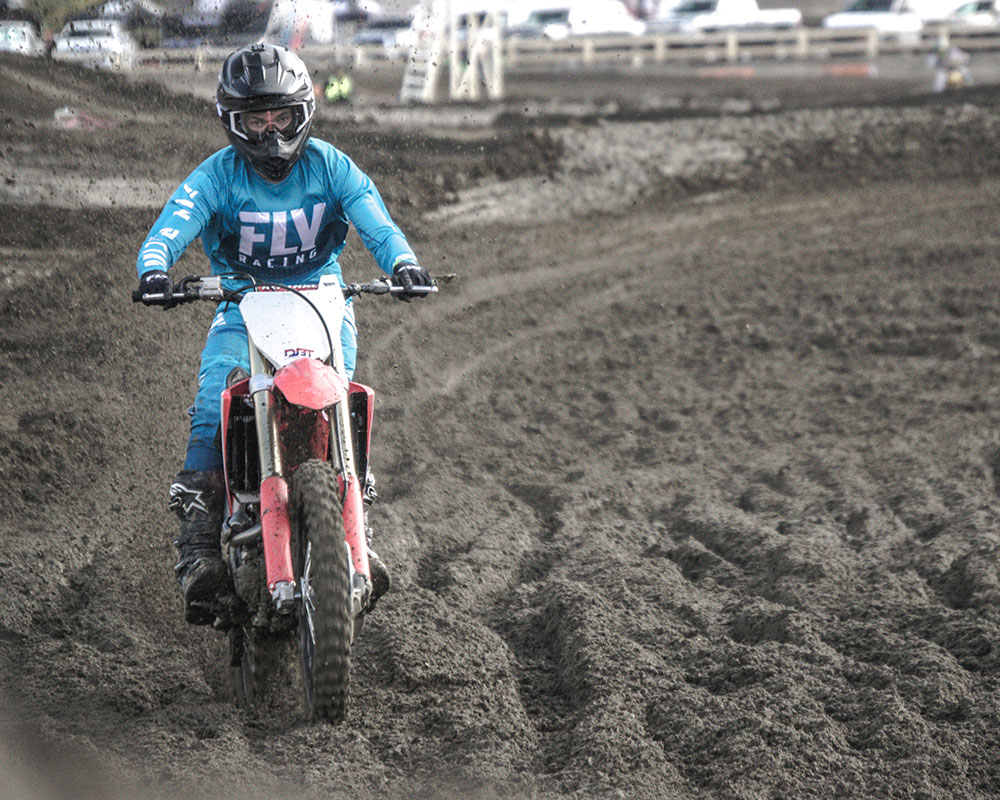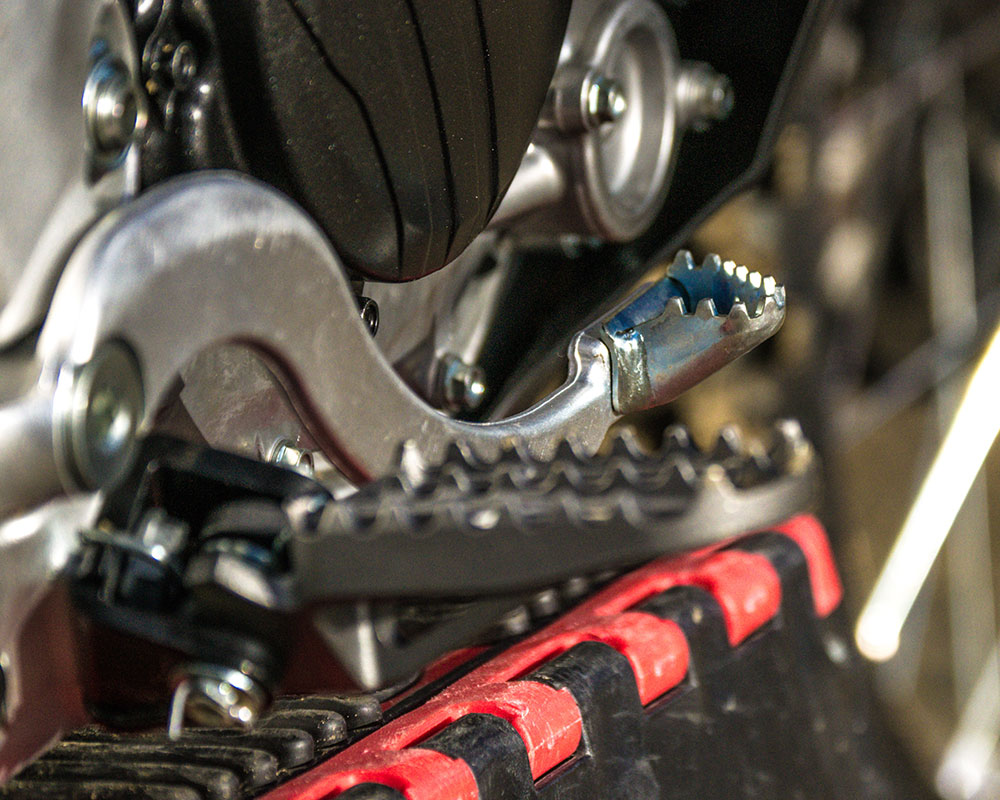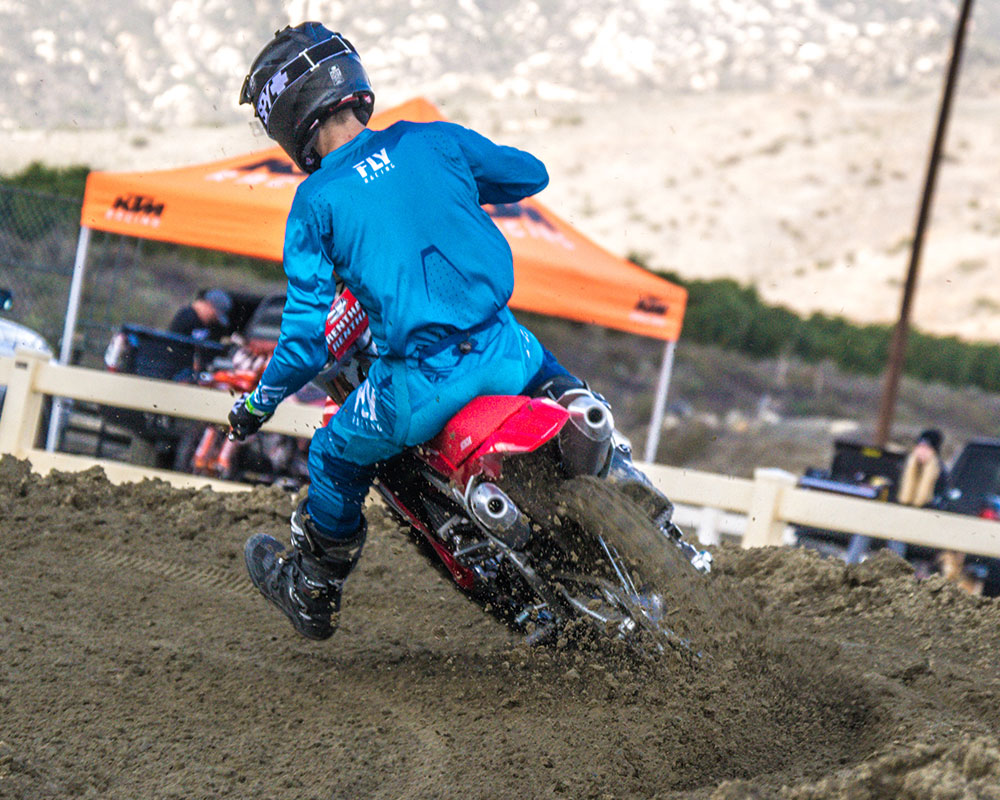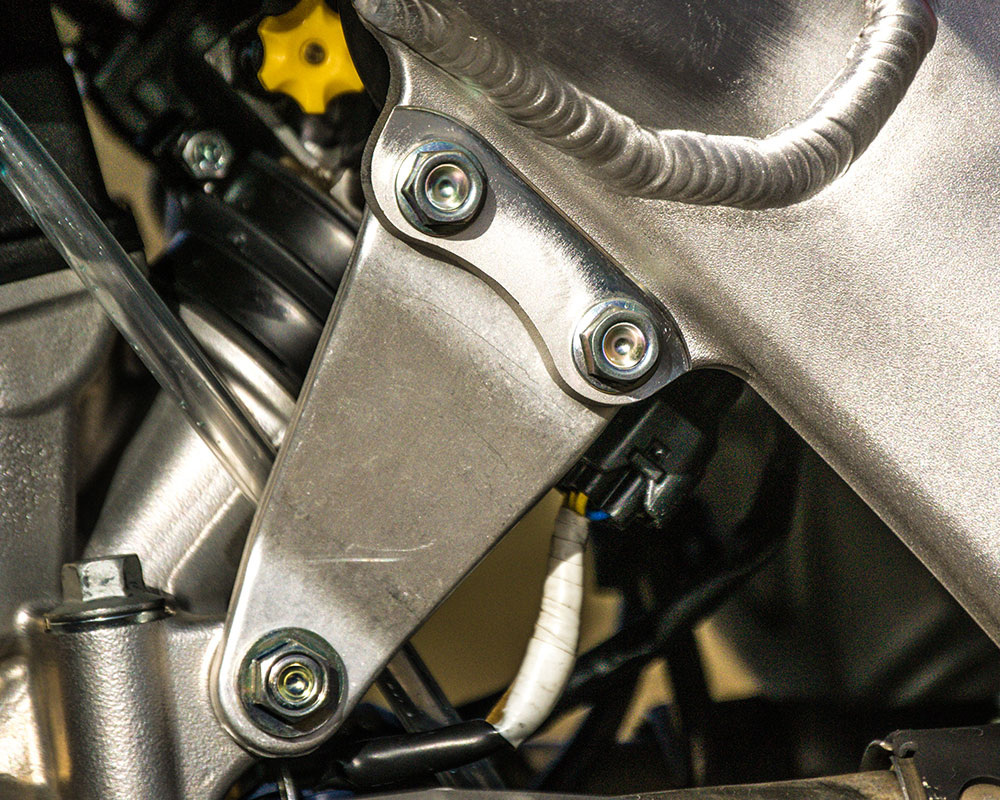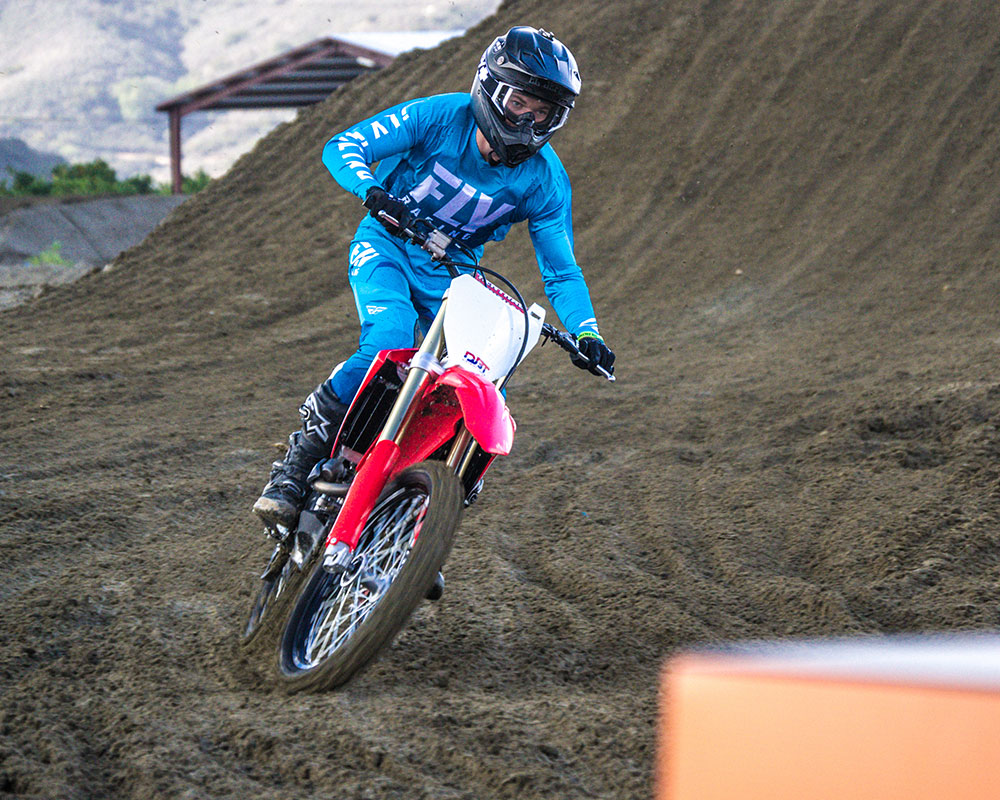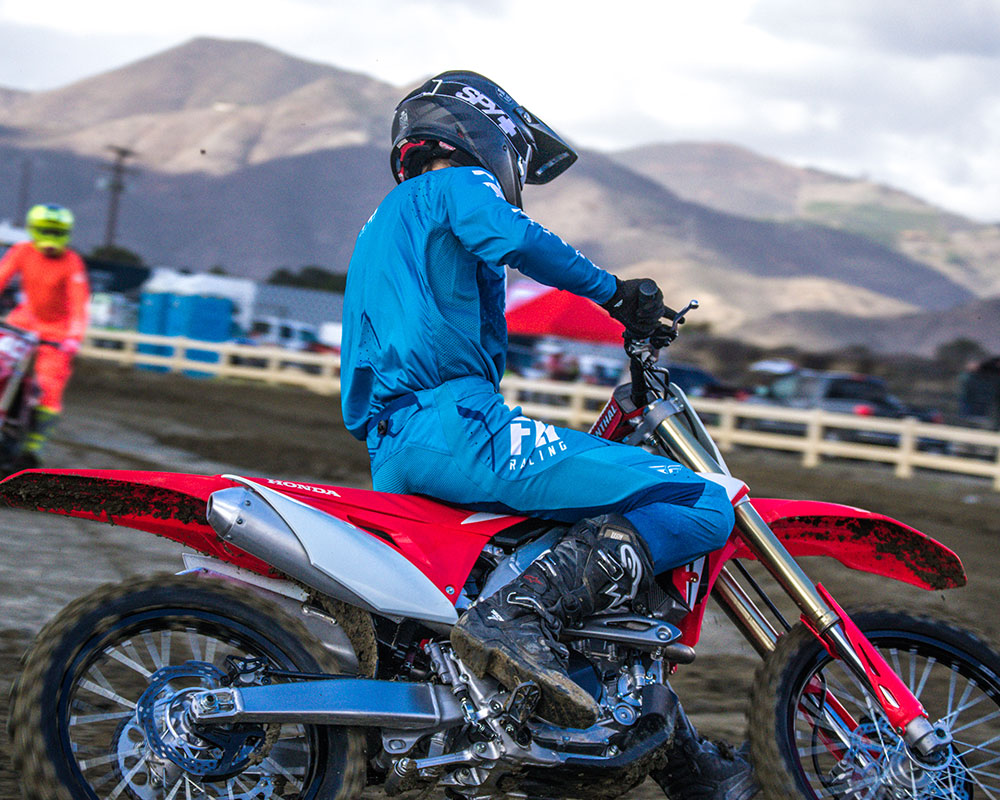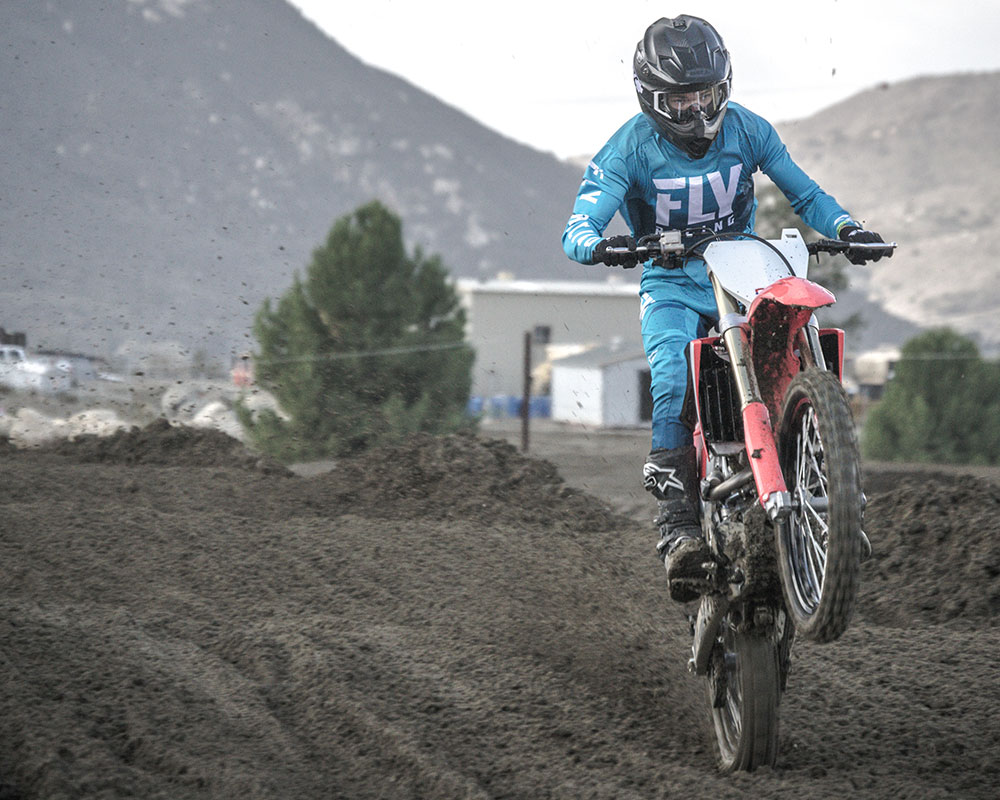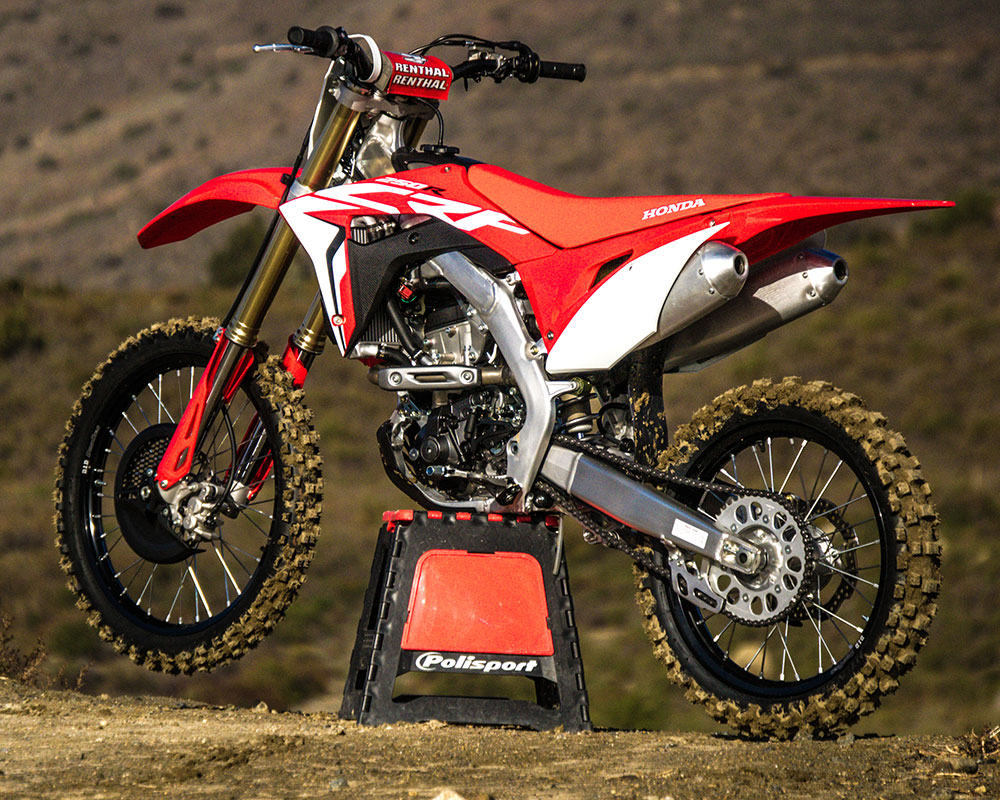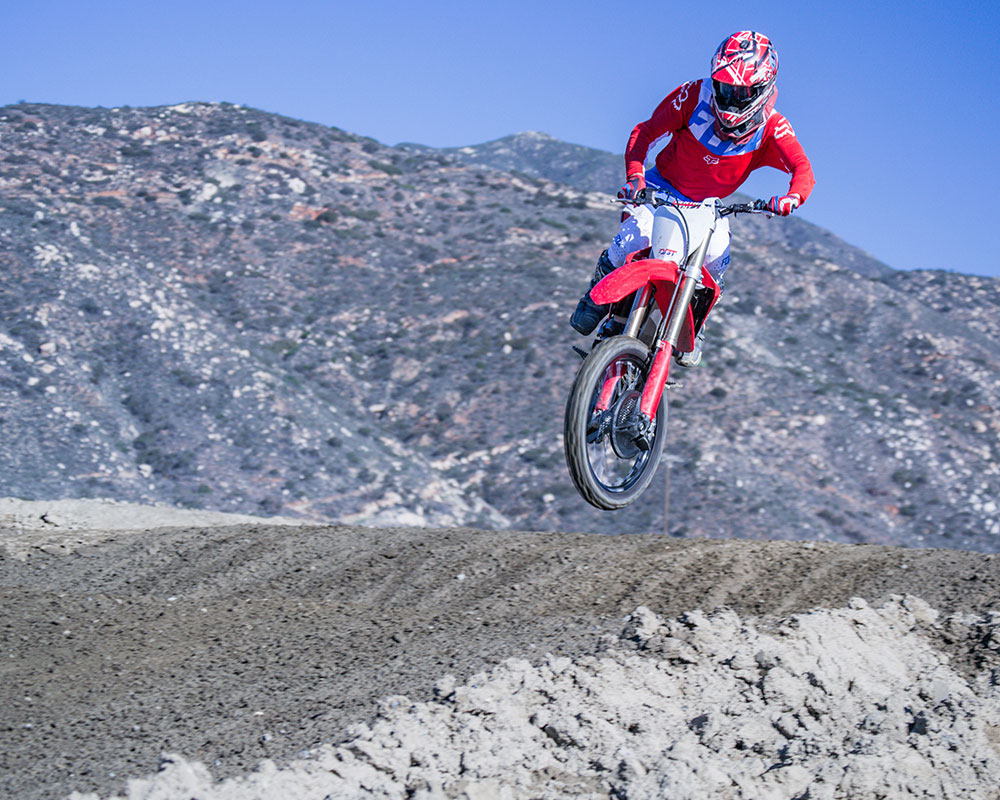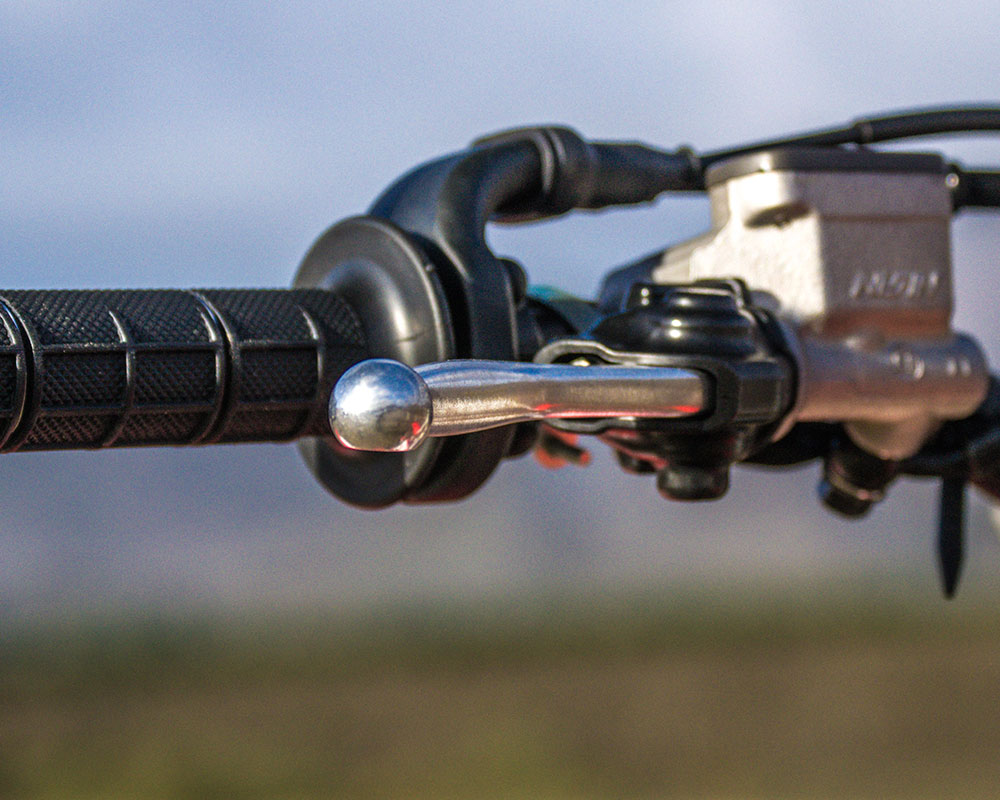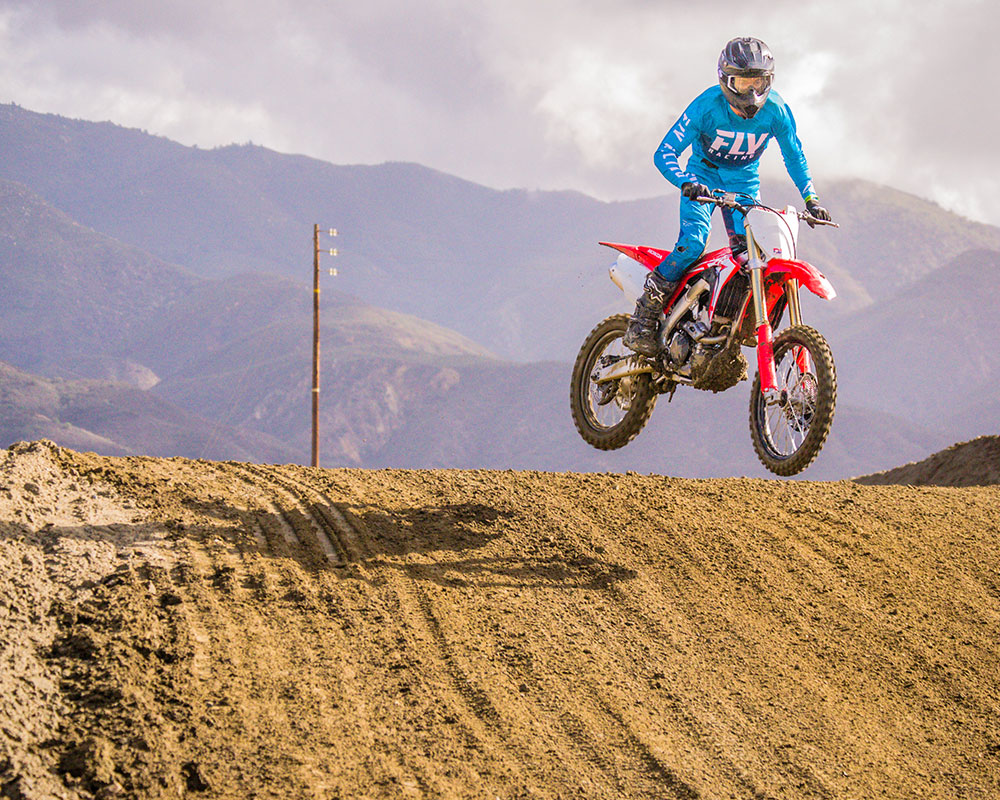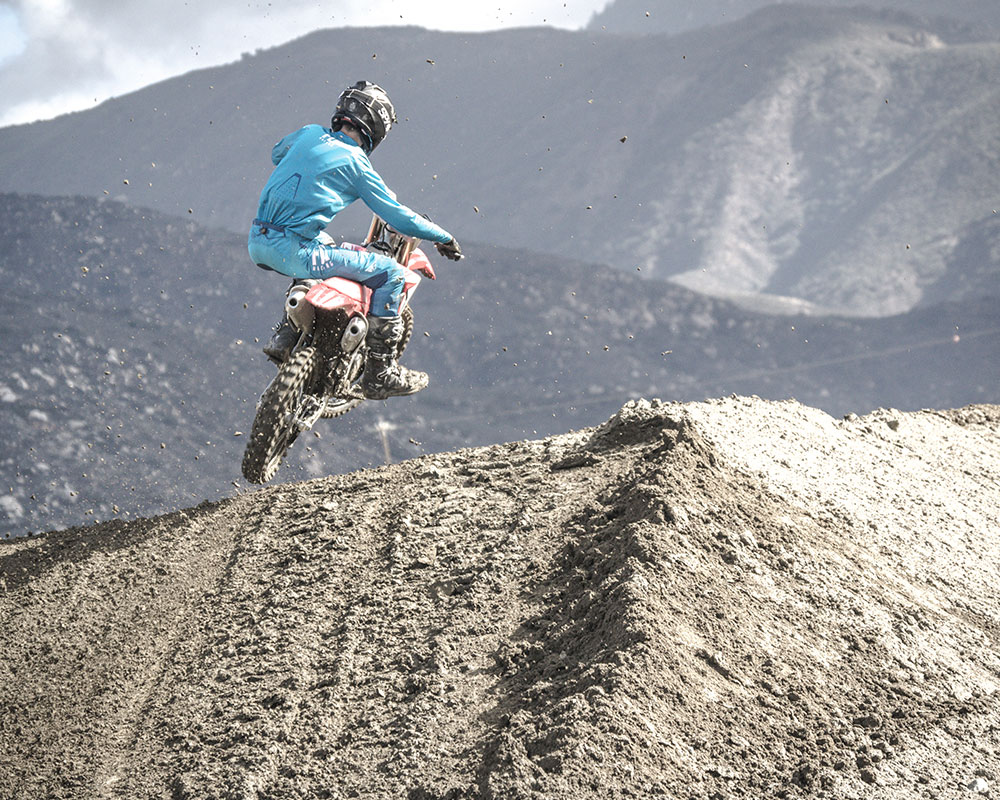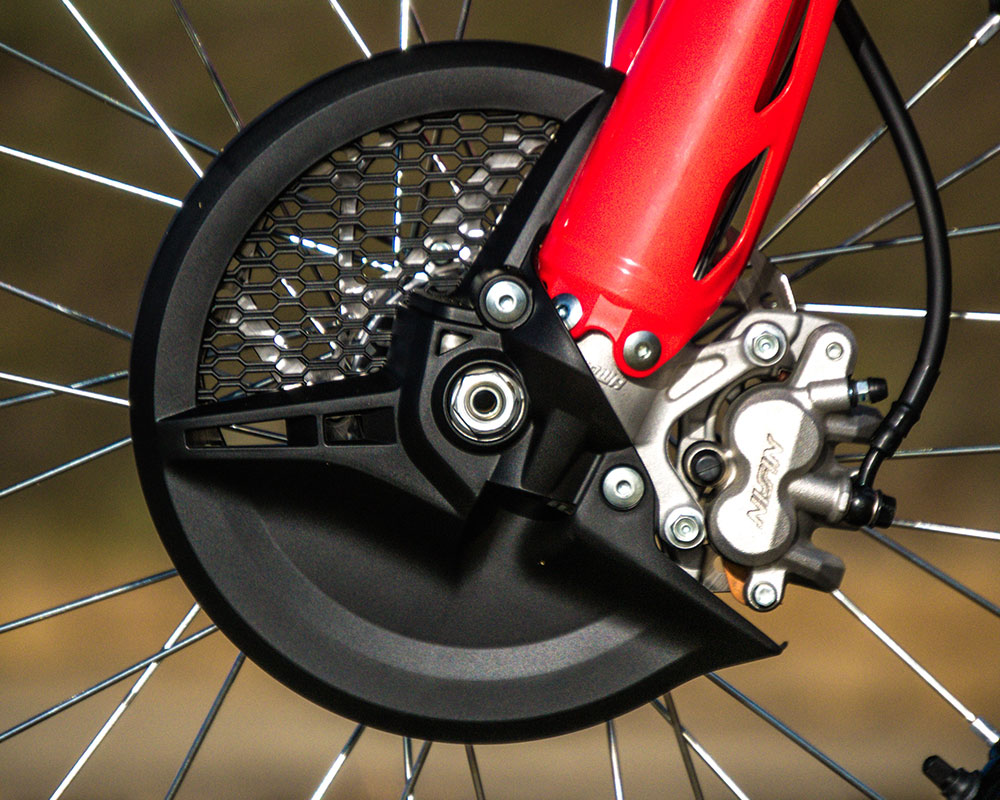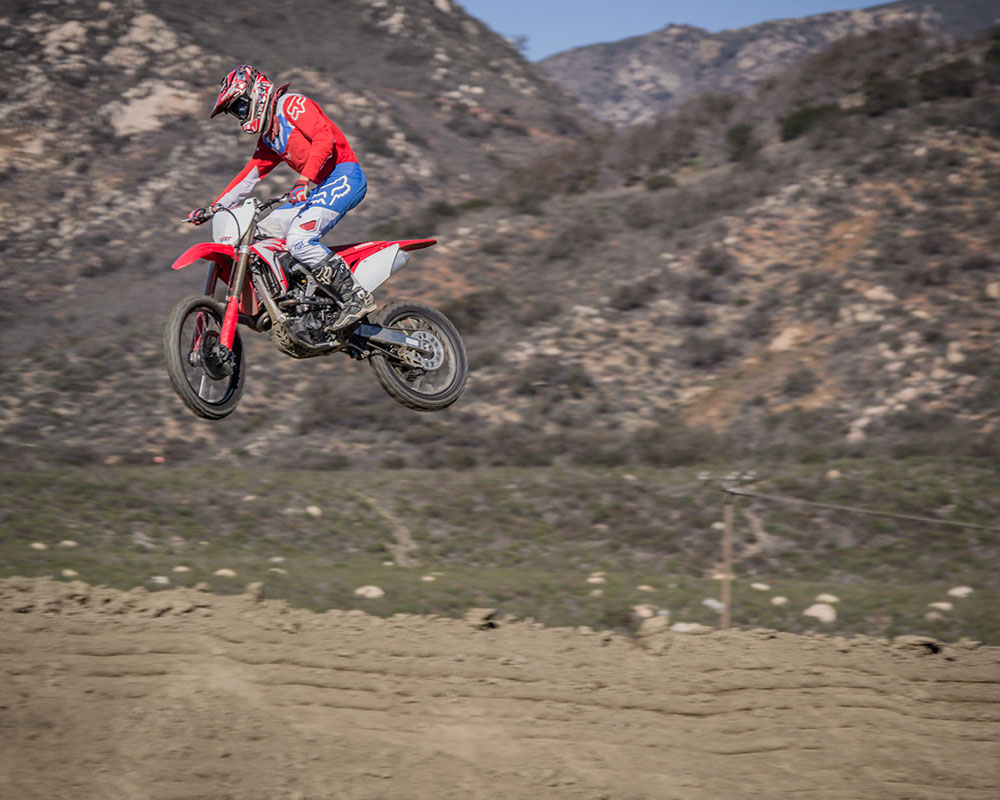2019 Honda CRF250R
Modern Day Time Machine?
MSRP: $7,999
- Strong, high revving top end focused motor.
- Suspension works well in every condition.
- Balanced, stable bike.
- Still lacks some bottom end power compared to its competition.
- Harder to ride for less experienced riders.
Introduction
- Honda's 250F Motocrosser
- 2nd Year Model
2018 saw the introduction of the latest generation CRF250R - an all new model resembling its big brother and the first appearance of a DOHC motor in the 250F chassis. While top teams like Geico Honda had some success with the bikes in the Pro racing world, the bike received mixed from moto media. The bike was still very capable, but maybe not surpassing every other 250F out there like some had hoped for. Back for 2019, the smaller CRF receives a host of updates in an effort the claim top spot in the 250F rankings.
Changes
- A lot of motor changes for 2019.
- Updated front brake, footpegs, and handlebars.
After an all new bike debuted last year, the Red Riders were busy developing and the 2019 model boasts quite a few updates over the previous year model. Most changes are aimed at improving the engine as that typically serves as the lifeline in the smaller bore classes. First up is updated geometry to both the intake and exhaust ports for a claimed improvement in the lower RPMs - something that was desired on last years bike. Additionally, a new 44mm throttle body (over last years 46mm) is aimed at improving airflow at lower RPMs without sacrificing top end performance. New cam profiles in that the valve-close timing is reduced by 2 degrees is also destined to improve bottom end performance. Notice a pattern here? A new five nozzle piston oil jet provides additional cooling to the piston and a new AC generator reduces weight and decreased friction. An updated right-side exhaust pipe has been shortened by 50mm to keep top-end power.
An updated front brake hose pairs with a new multi-diameter front-brake caliper with a 27mm and 30mm pistons, respectively. This is designed to improve braking with a better feel and more power. New footpegs shed some weight and the top triple clamp now offers multiple bar mount positions for more adjustability. A Renthal Fatbar is mounted to the new tripleclamp and bar mounts to provide a better flex characteristic. Finally, black wheels grace the CRF and redesigned fork protectors provide better coverage of the 49mm Showa spring forks.
Power
- Top end heavy motorcycle.
- Still lacks some power down low, but mid-range and up is competitive.
- 125cc two-stroke like powerband.
- Mapping options are useful -- specifically the Stock and Aggressive maps.
In the 250F class, a powerful motor still reigns supreme much like back in the 125cc two-stroke days. Riders are often looking for all of the power they can get out 250cc four-strokes, and Honda went to work in 2019 to boost their motor up a bit.
In a way, the Honda motor reminds us a bit of a 125. Not to say that the power output is the same as a 125, because it’s not, but the way you have to ride the bike is a nod back to the premix days. To put it simply, the higher the RPMs, the faster the bike goes. The DOHC motor likes to be screamed all the way around the track, and when we felt the need to shift, we’d count one or two seconds before shifting to get a little extra power out of the small bore. Depending on the type of rider and the type of tracks you ride, this could be beneficial or a downfall. Tighter or rutty tracks are tougher to ride, but faster tracks like Glen Helen or Cahuilla Creek are a dream on this bike.
Bottom end pull is, at best, just average in the class--better than some but not the best. It’s enough to pull you out of a corner but ensuring you’re in the proper gear is a must as it doesn’t have the meat to really pull out of corners a gear high. Coming into the mid-range, the bike starts coming to life and shows some of its strengths. From mid to top, the CRF has some of the best power in the class and can run with just about any other 250F motocrosser. As stated above, the bike likes to close in on the rev limiter, where overrev is pretty good. Throttle response is excellent throughout the range, with a bump as you climb higher in the RPMs.
A notable change that anyone can play with is using the preselected maps on the mapping switch. There’s a Stock Map 1, Mellow Map 2, and Aggressive Map 3 and most of the time, we opted for the aggressive map. The aggressive map gave it a little more bottom end while also revving out quicker than the stock map 1. Top end was sacrificed a bit, but for riders who don’t like to get near the rev limiter, this was a bit of relief. Either way, it’s hard to go wrong in either Map 1 or Map 3 as the power is motocross style and aggressive, but a little different, with both of those. We briefly experimented with Map 2 but had no reason to mellow out the power at all, and it does not boost the bottom end. Like we complained about on other CRFs with the adjustable maps, the operation of the button is taxing and in reality can not be activated on the fly. You have to hold it while the bike is at idle, something you will not be doing in a moto.
Clutch life has held up for our testers, though none of them are hard on clutches. Shifting is smooth and precise on the red machine and the gearing wasn’t an issue for our lighter riders. In addition, the E-Start only motor fires up quickly and easily. The exhaust note is on the louder side, but bearable and not the worst in its class.
Suspension
- Coil spring fork and shock.
- Both fork and shock work well in unison.
- Sag is critical.
The Showa suspenders on the 250R are a bit of a standout feature on this bike. The 2018 introduction of the 49mm coil spring forks and shock have gone back to the simple and easy concept leaving the mixed reviewed air forks in the rear view mirror. The fork has very good hold up coming into turns with nice progressive bottoming. For our lighter riders, the fork tended to get a little harsh on small chop, and backing out the compression one click remedied this problem.
The shock worked equally as good as the fork on the CRF. The rear wheel seemingly always hooked up and found traction no matter how choppy and chewed up acceleration bumps were. Likewise, we never had any issues with the rear end packing or kicking. Our go-to race sag was 107mm for a good balance between stability and cornering. On one of our initial rides, we hopped out on the track without setting the sag and instantly knew something was wrong when the front end felt like a shopping cart. After a quick sag check, seeing that it was at 103mm was the culprit. Although 3mm may not seem like a lot, it can be and was the difference between a great handling bike and a poor handling bike.
Overall, the bike felt really balanced in the suspension department. The bike rode even at all times and avoided the dreaded stink bug feeling. Similarly, there was no see-sawing action on decel and accel. To note, we ran the forks at 5mm above the clamps in stock position as we never felt the need to raise or lower them.
Chassis - Handling
- Excellent cornering paired with very good stability.
- More forgiving and easy to ride chassis.
- Easy to get accustomed too.
Contrarily to its big brother, the CRF250R handles like a dream. It’s a bit more forgiving and less aggressive feeling than the 450R making it more confidence inspiring. Whether you’re reliant on the front end or like sliding the rear end around to steer, the Honda does it all and can even make a bad cornerer feel like a hero at times. The bike is effortless to maneuver in the corners, though the lack of bottom end sometimes made it a little tricky as it was hard to find the sweet spot in the power to not fall on its face in the lower RPMs or jump out of the rut when revved up. Overall, the chassis’ ability to corner is more than competitive against its competition.
In addition to its standout cornering, the Honda doesn’t lack much in stability either. With proper sag, the CRF felt planted and pushed forward in a straight line. Head shake was minimal to nonexistent at some of our faster SoCal tracks near the end of a rough day. Also, many of our riders commented on how light feeling the bike is. The scale weight may not indicate that it’s the lightest bike, but on the track is a different story. Flicking the bike around in the air or dropping into a rut is a breeze and if the bike ever got out of shape, regaining control was effortless. Similarly, the bike feels nice and thin and we never got our boots or pants caught on anything while riding.
The cockpit feels like a typical Honda -- something any rider could jump on and instantly feel at home. There ‘s enough room for taller, 6’1 riders to feel comfortable while smaller, 5’7 riders didn’t feel stretched out. The new Fatbar was preferred over previous year’s 7/8 bars for being slightly lower and more compact. The brakes work as good as any Japanese bike and get the job done without any fading. Maintenance on the bike is classic Honda - simple and straightforward. The airbox is a little tight when changing an air filter, and a little dirt would drop into the bottom of the air boot at times, but nothing that a quick cleaning wouldn’t fix.
Conclusion
- Fun yet hard to ride 250F.
- Strong motor up top paired with good suspension/handling equates to a fast bike.
Overall, the 2019 Honda CRF250R is a contender in the small bore class on the right terrain. The bike is built for faster and flowing tracks where carrying momentum is ideal and revving the bike is made easy. It’s a bit of a refreshing touch in an age where riding a four-stroke equates to being lazy and brings us back to a time when two-stroke tiddlers ruled the ranks. The motor is up to speed in the mid to top end and the suspension and handling allows you to confidently reach peak power frequently. The bike may not be the easiest bike to ride and to ride fast, but it sure is fun.
Recent Product Tests
Leave a Reply
